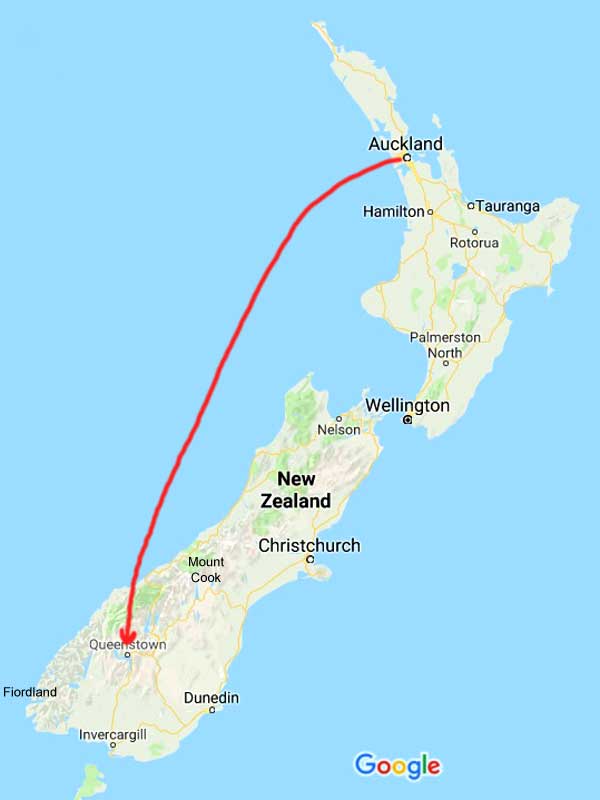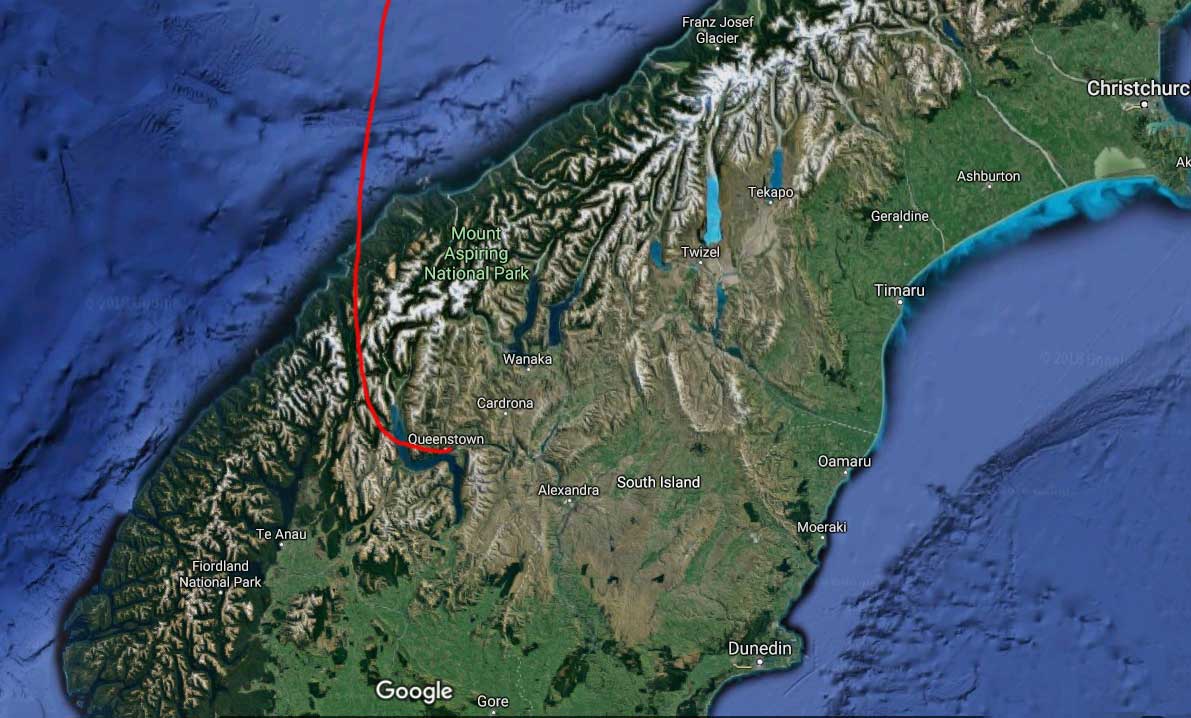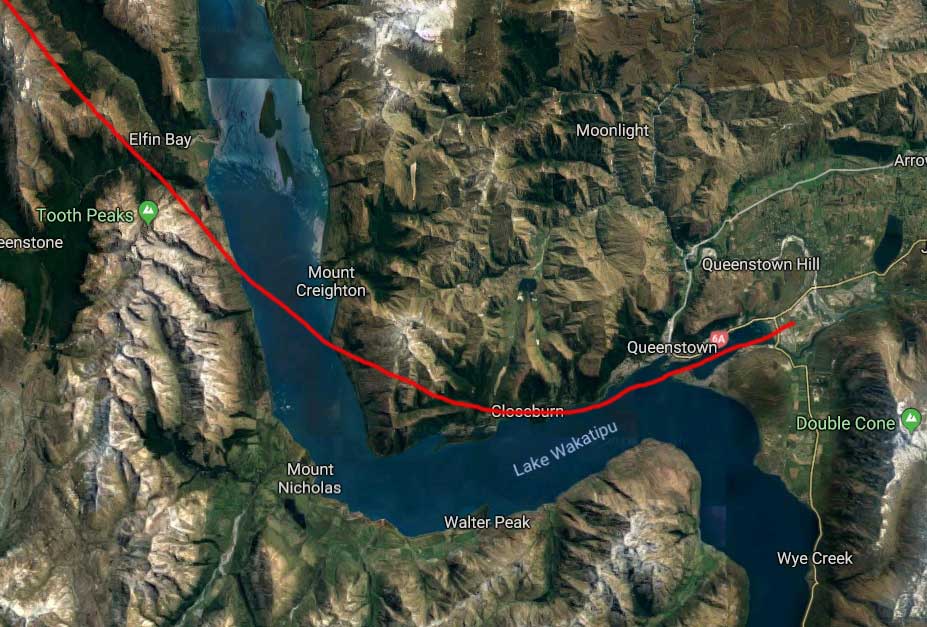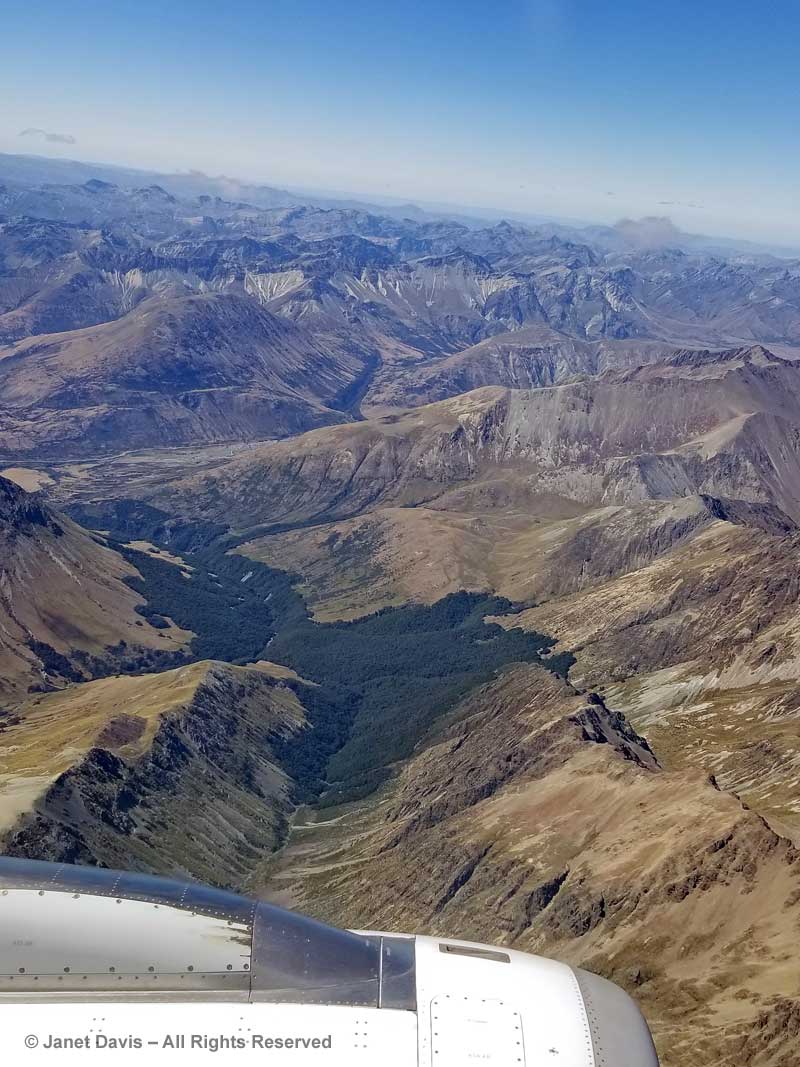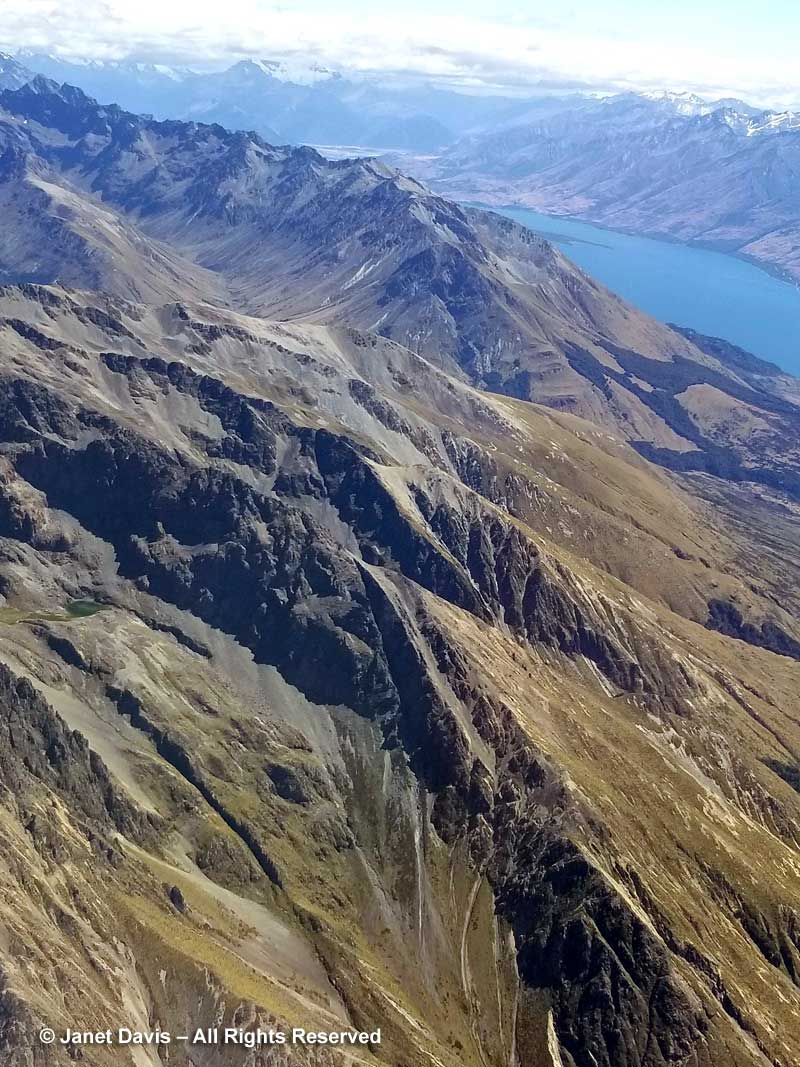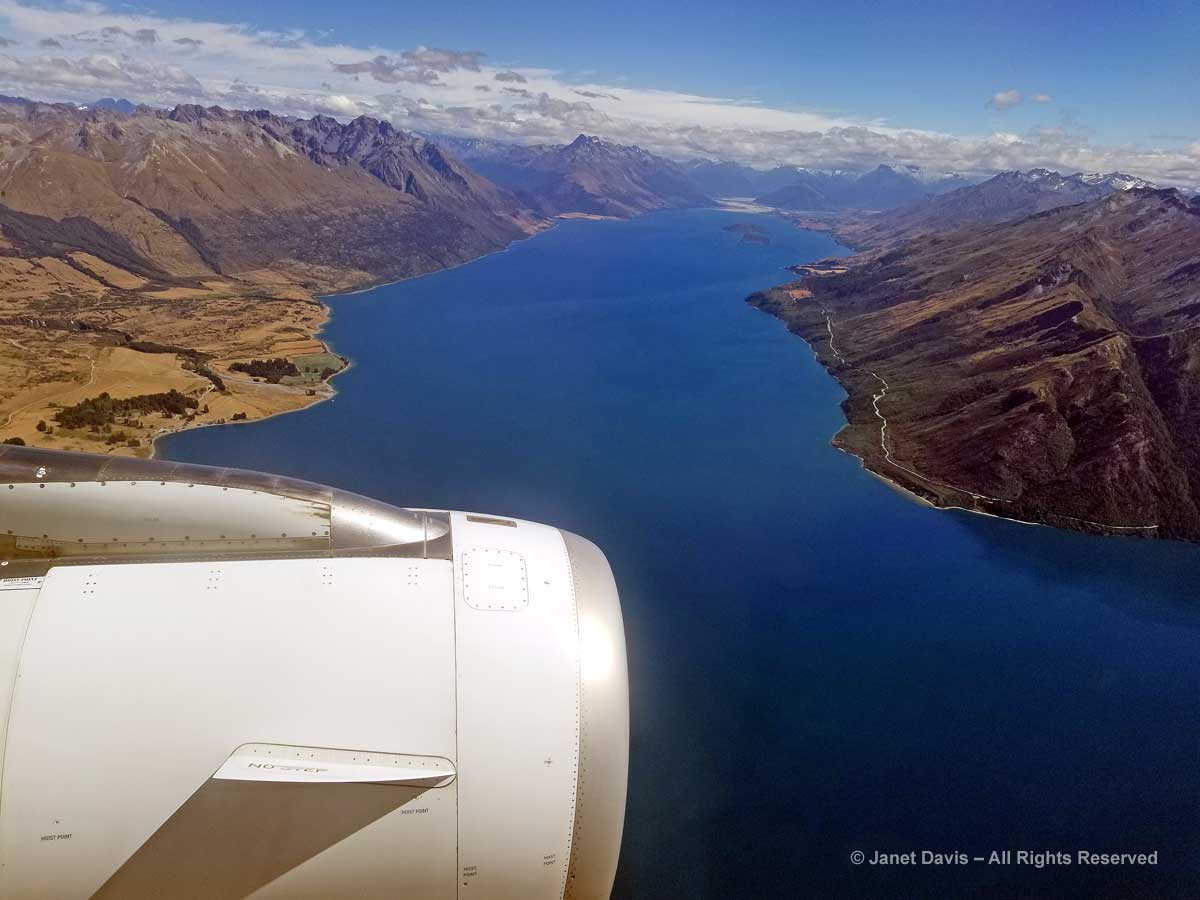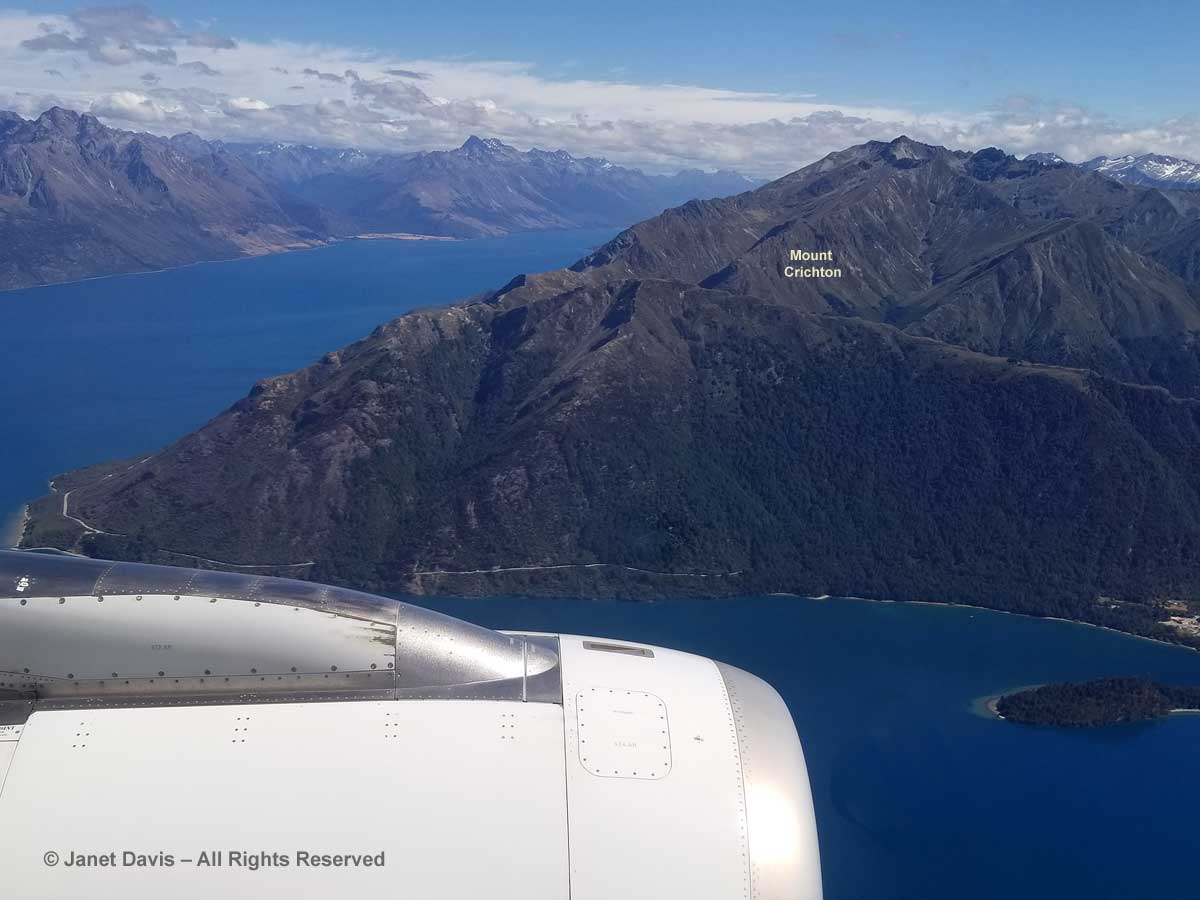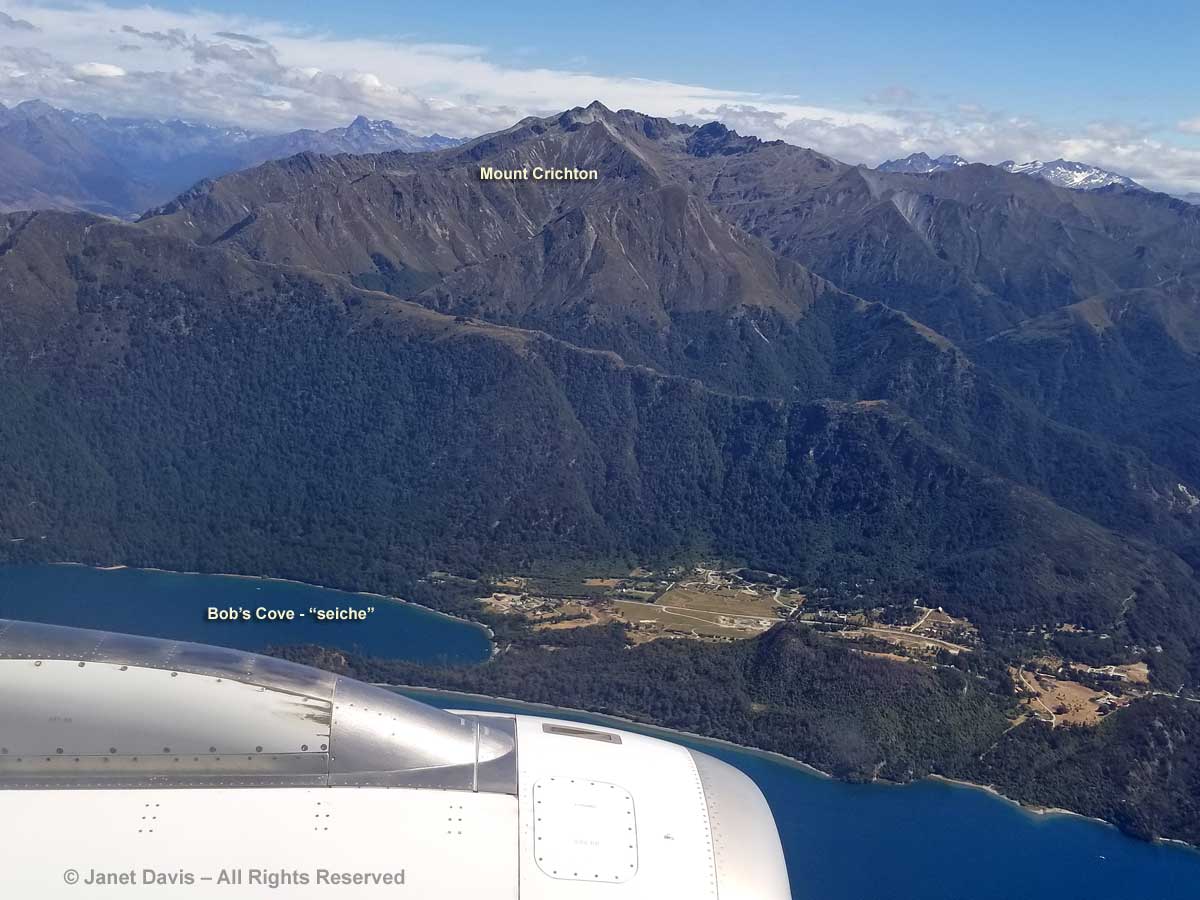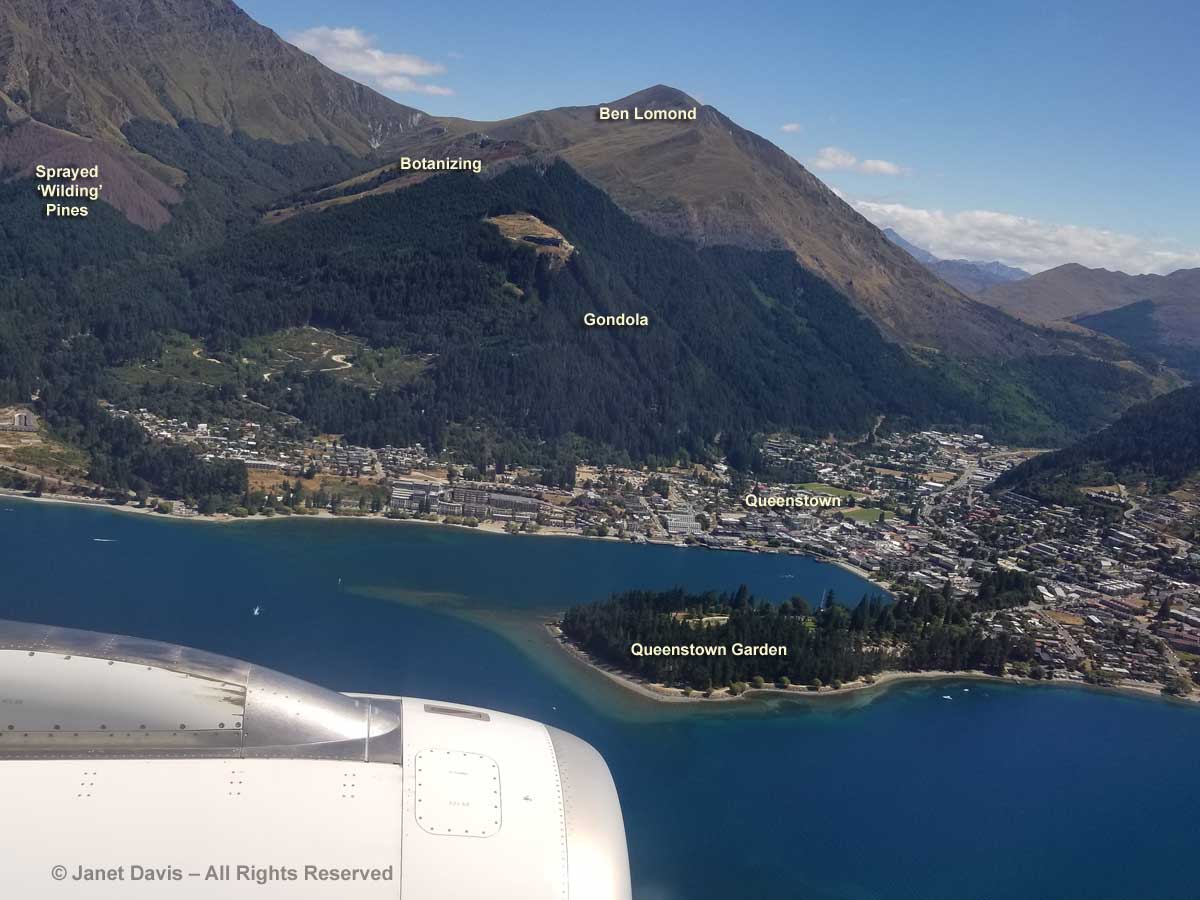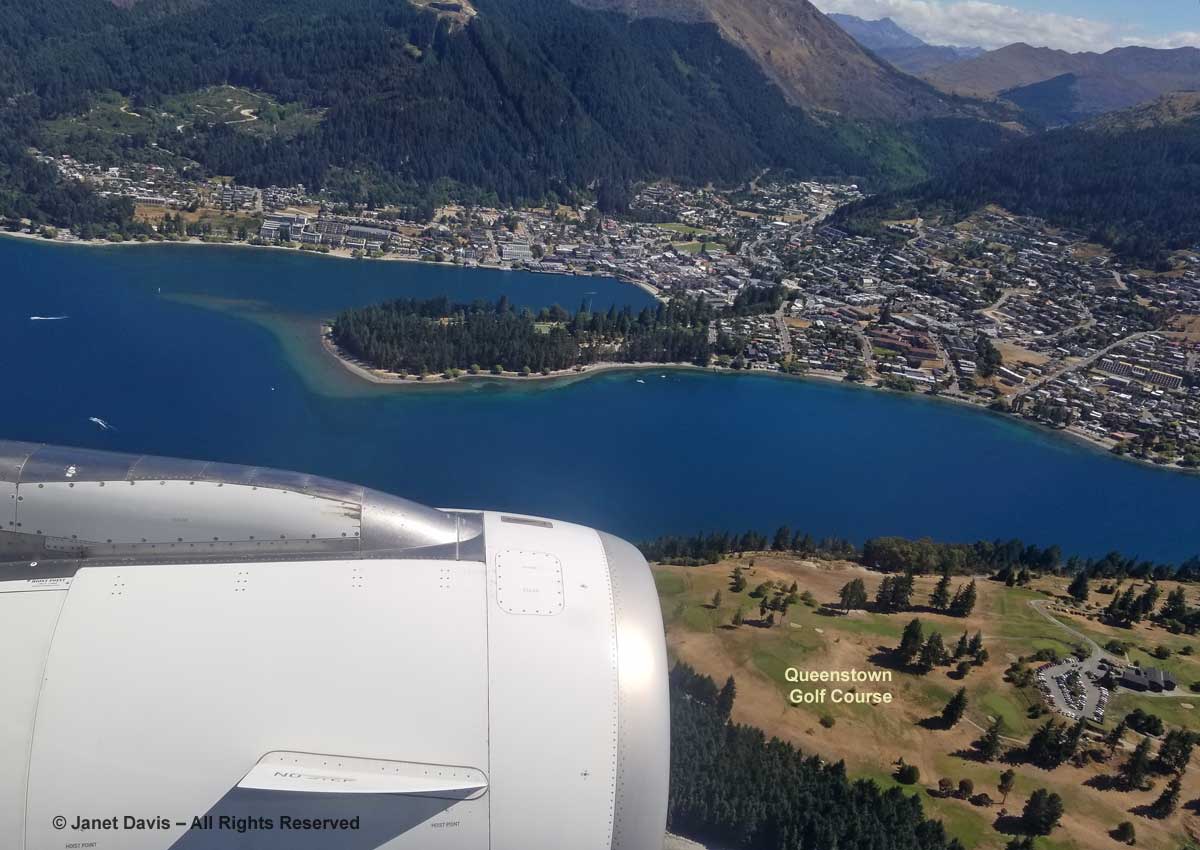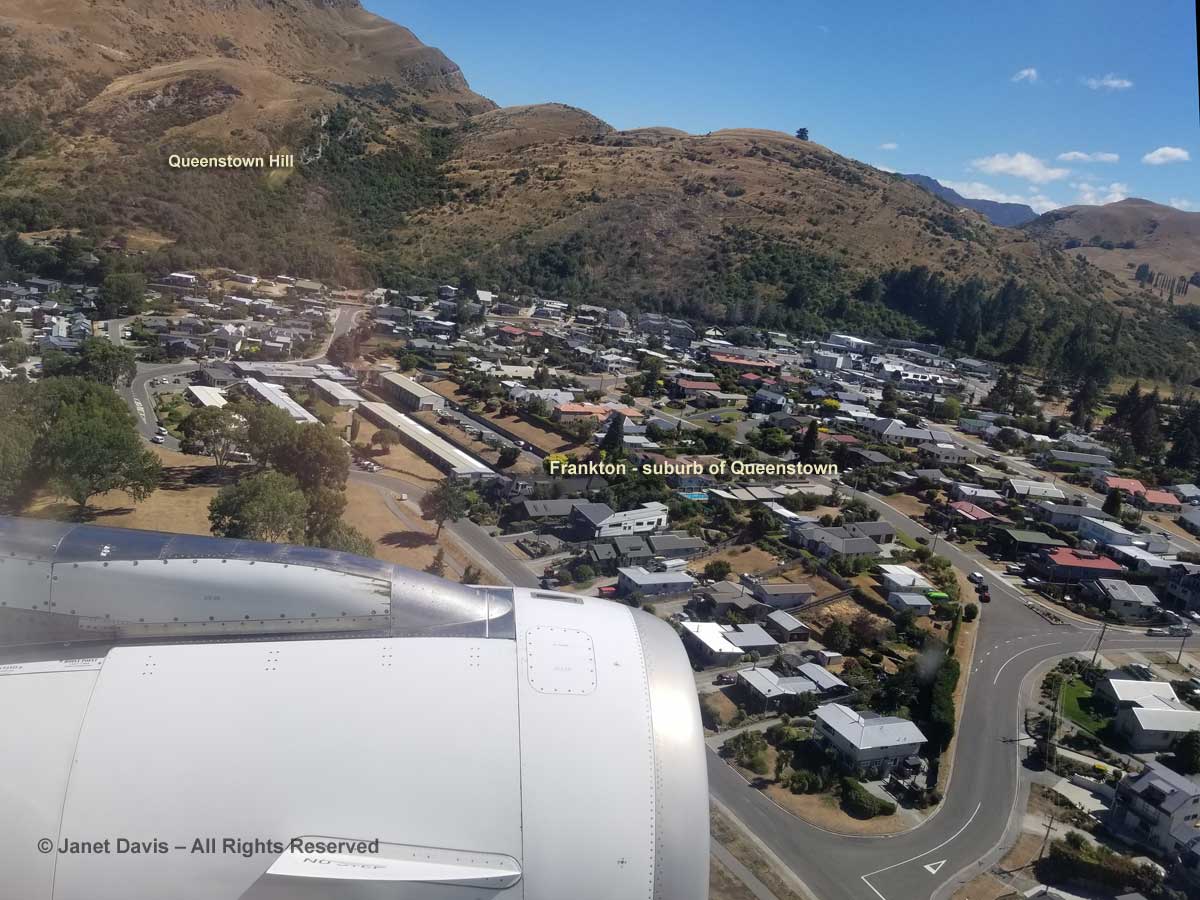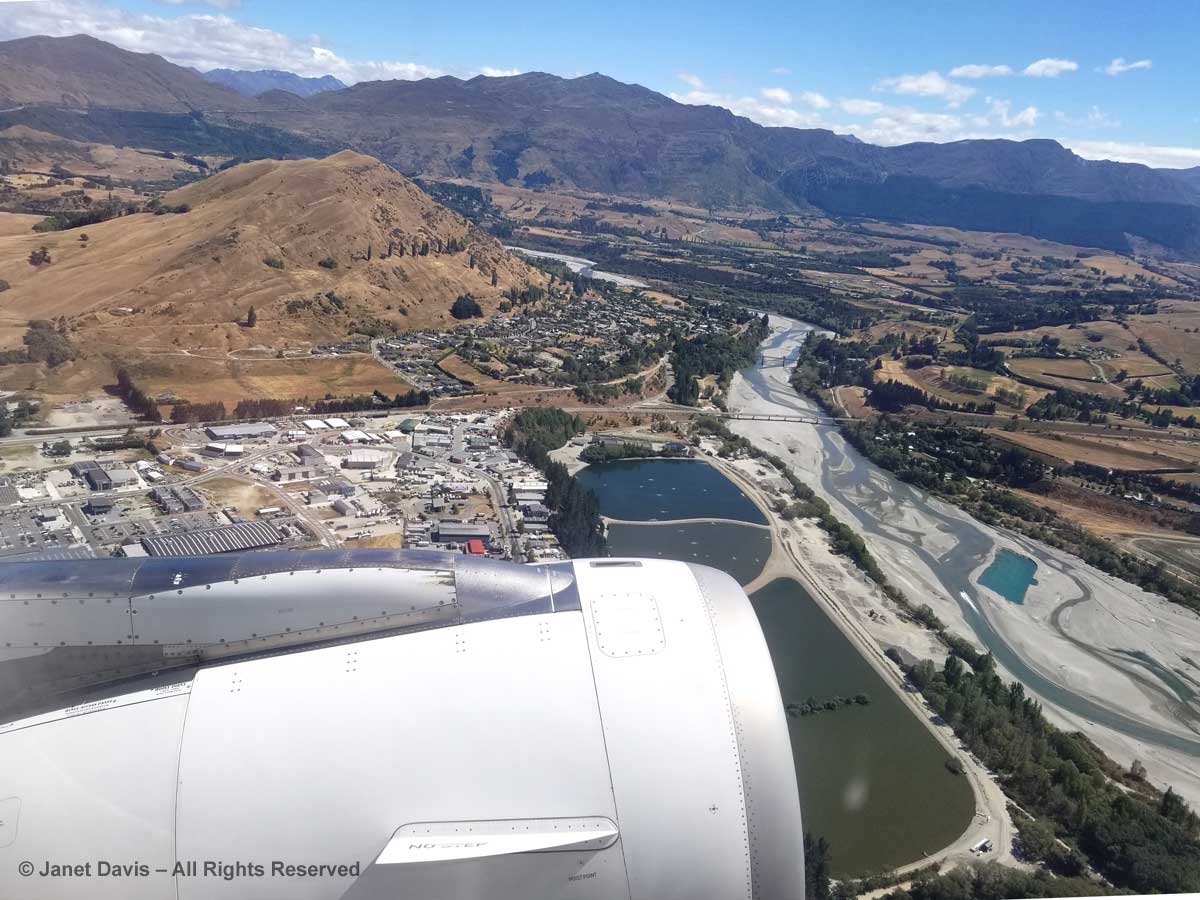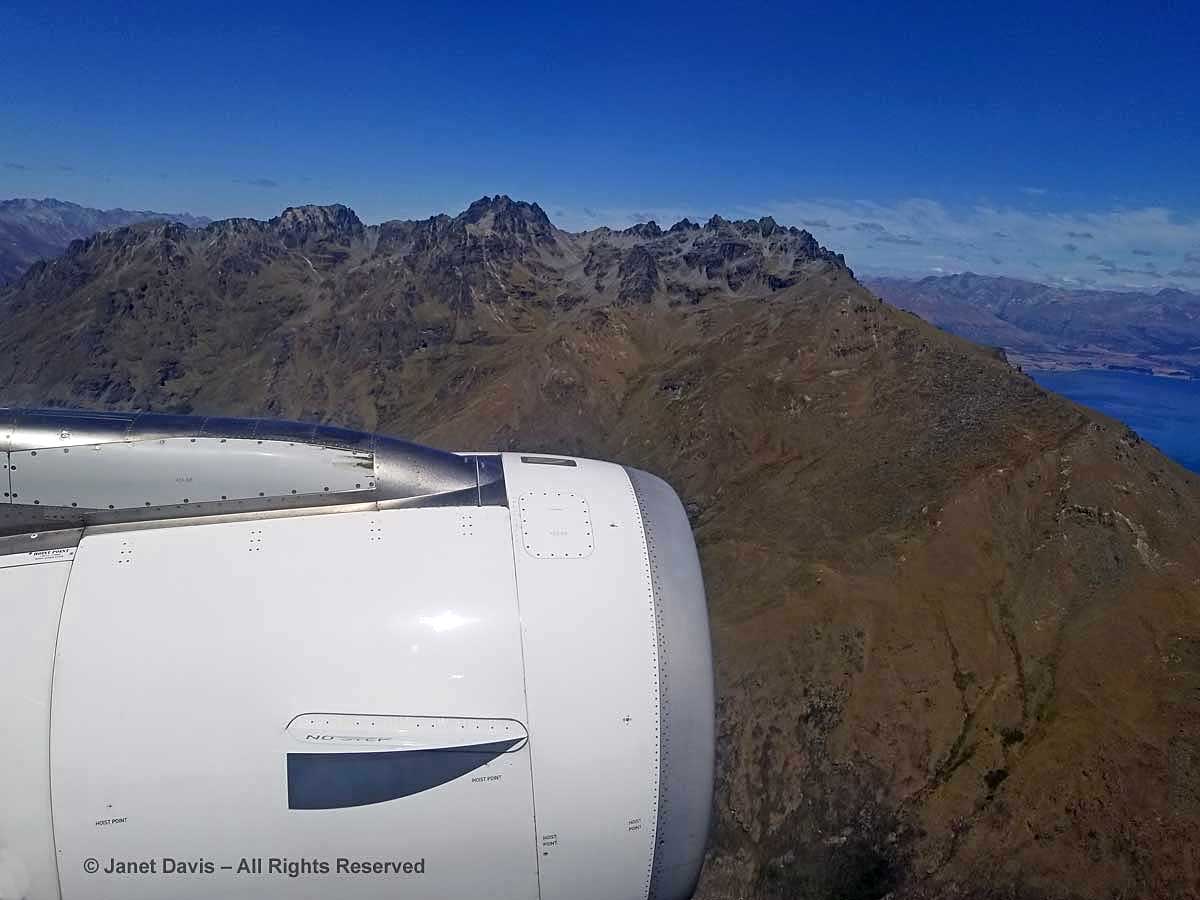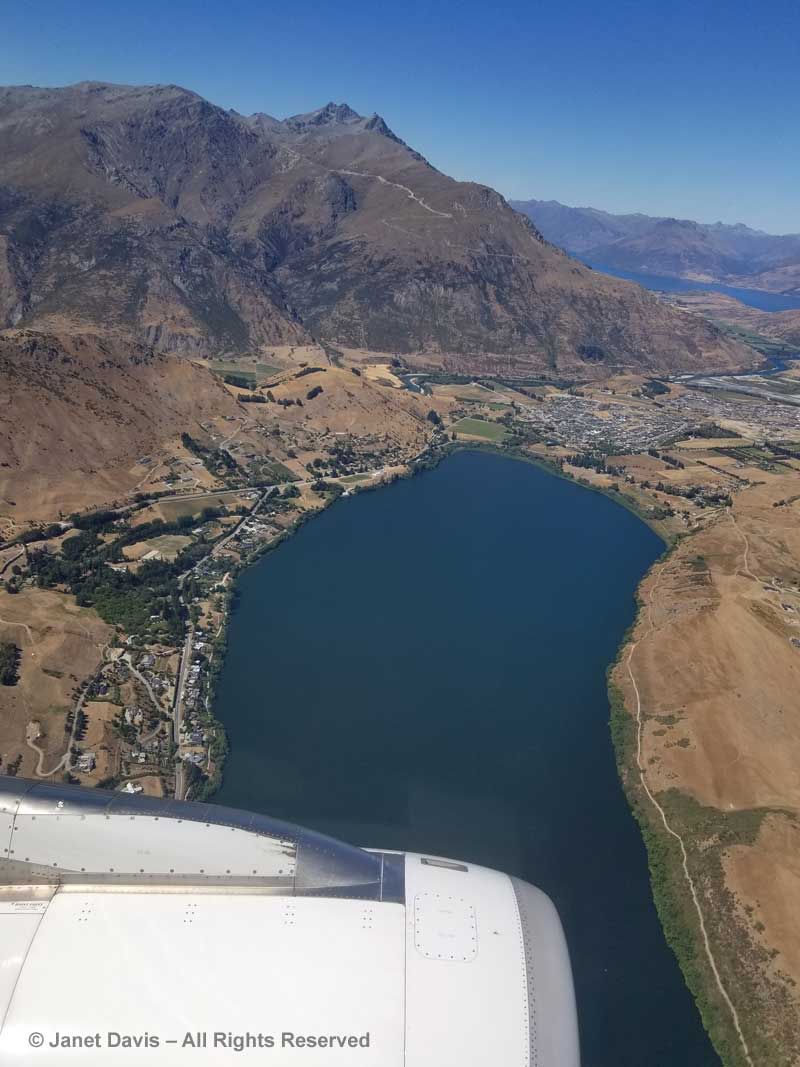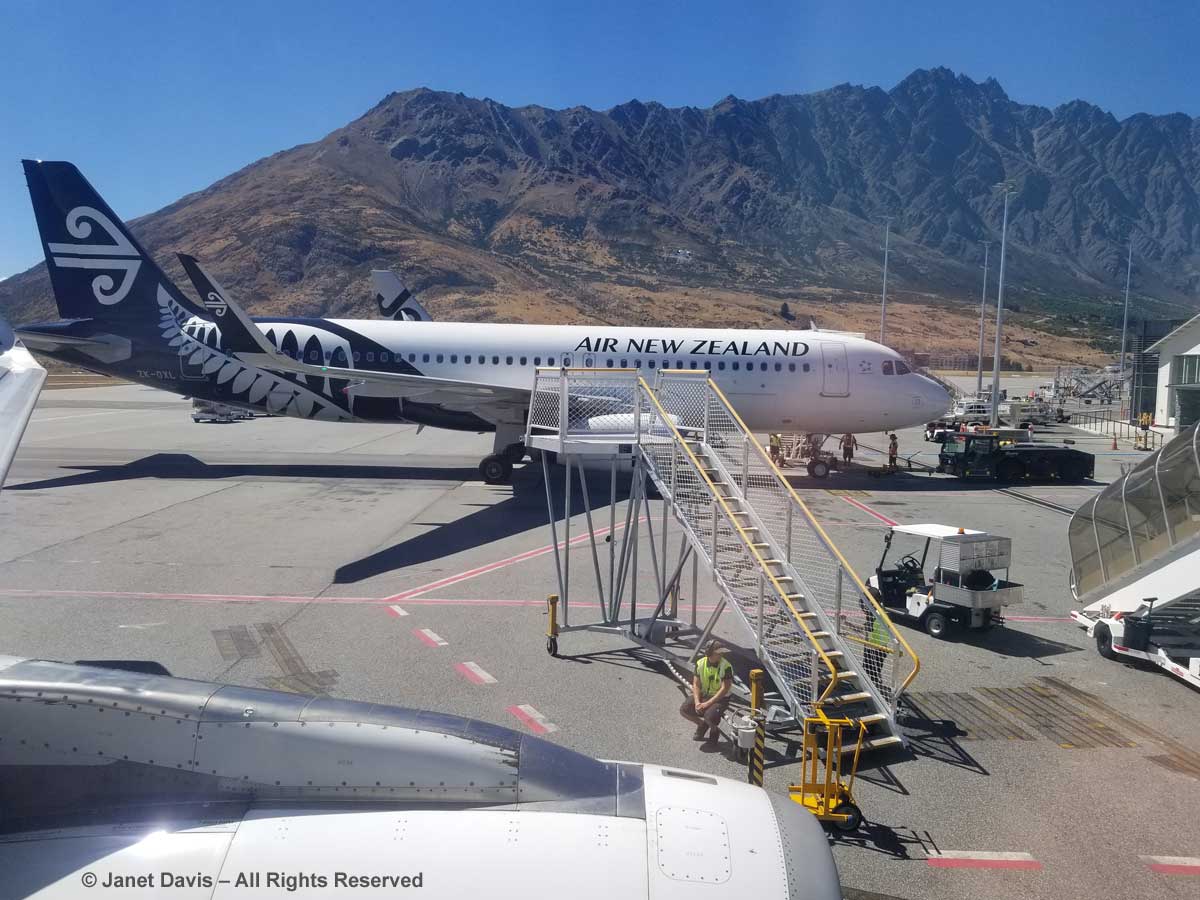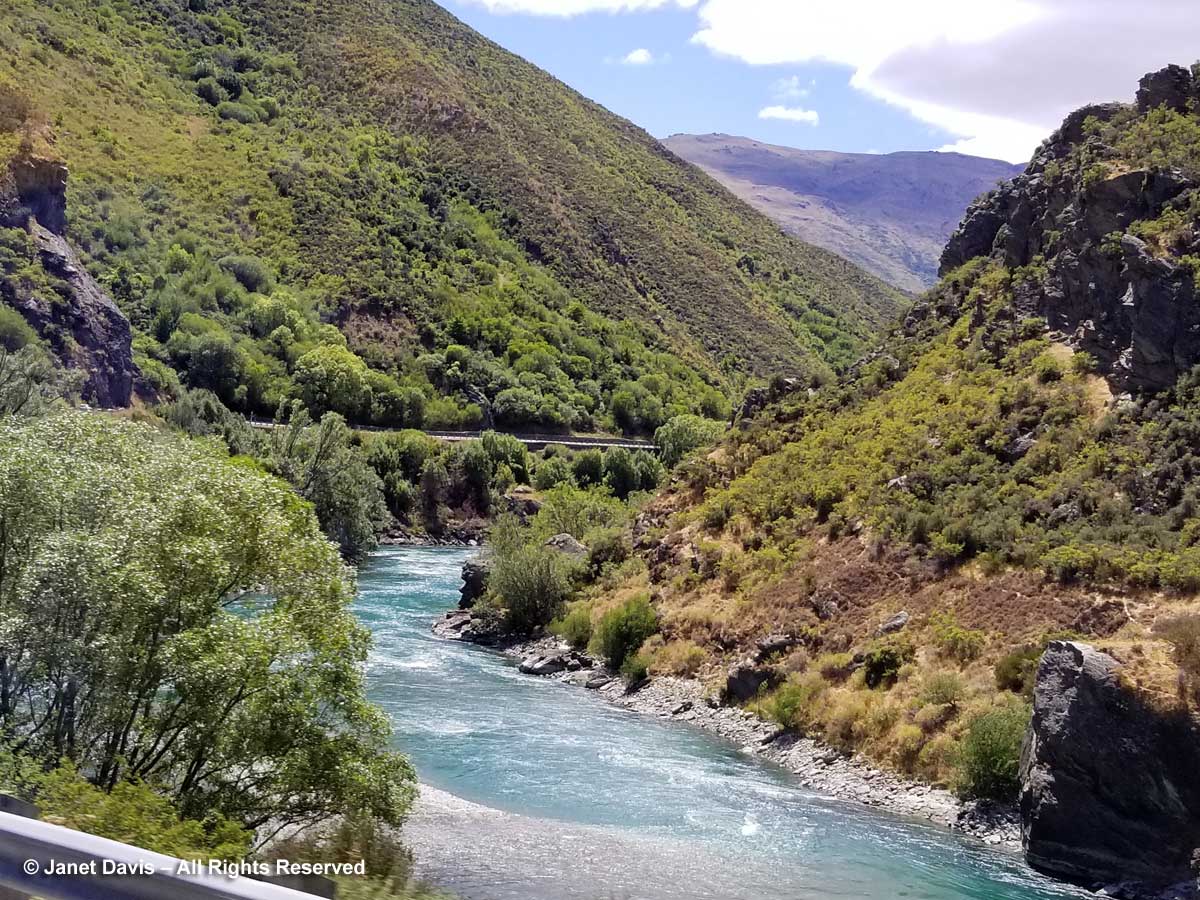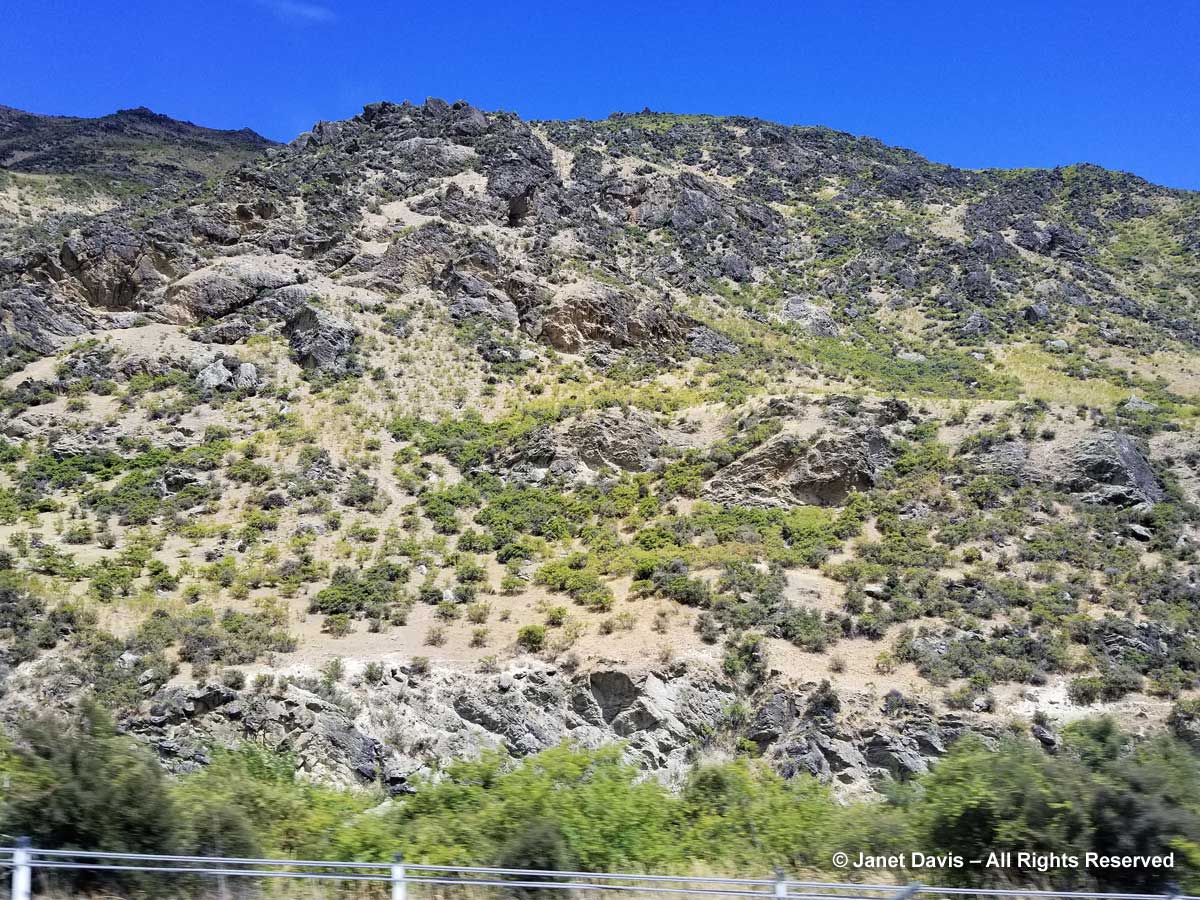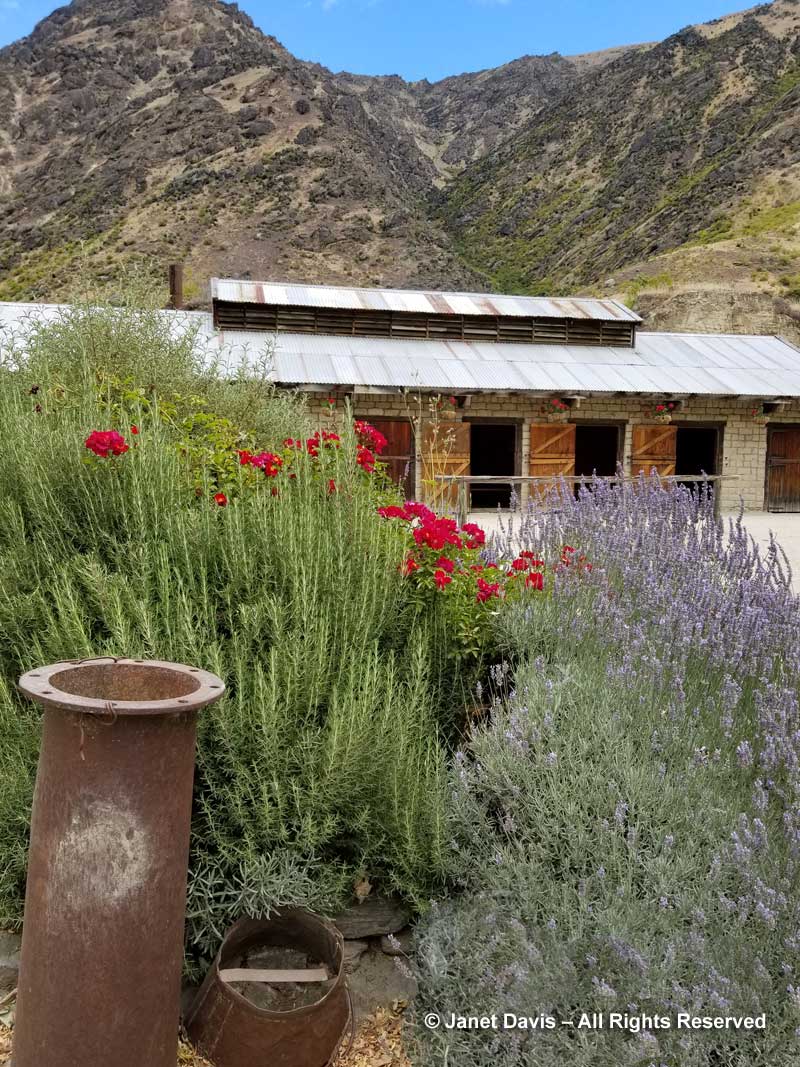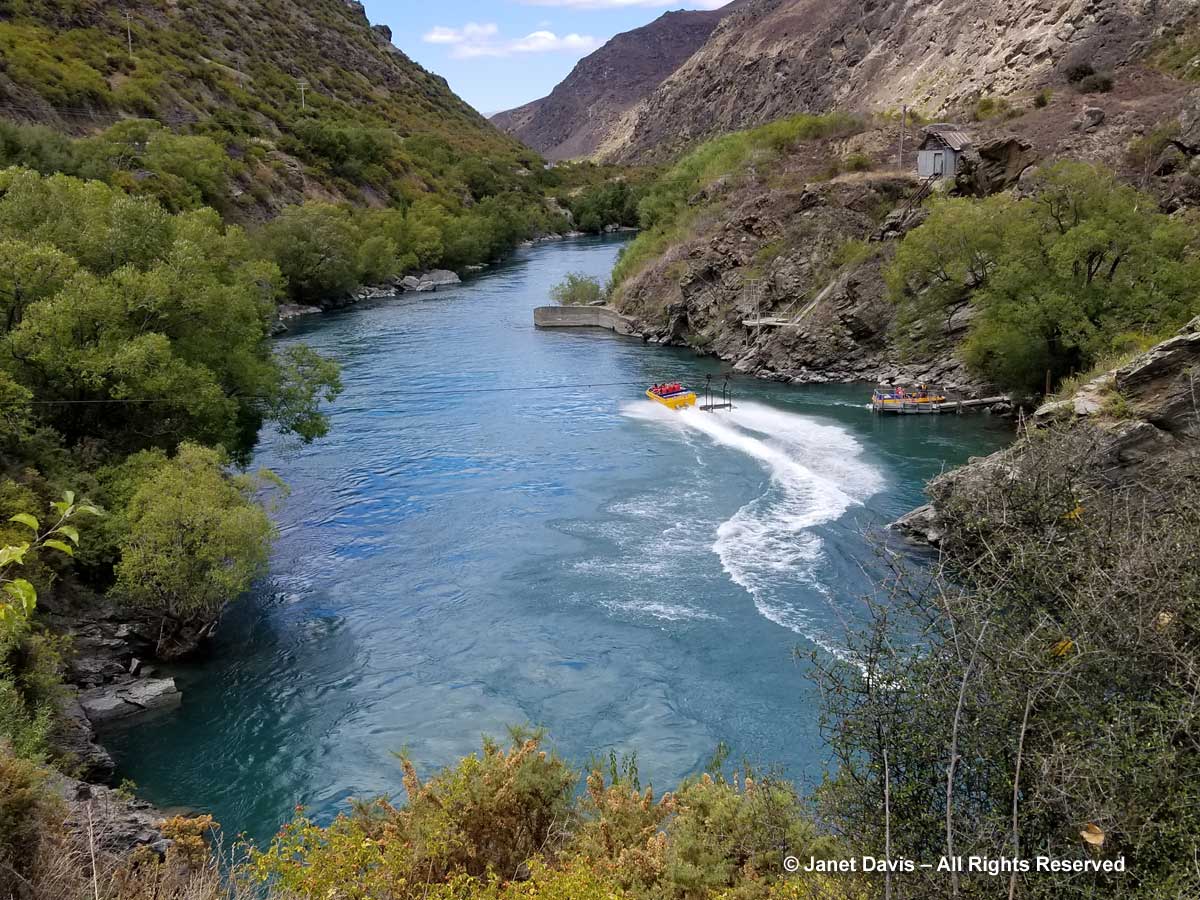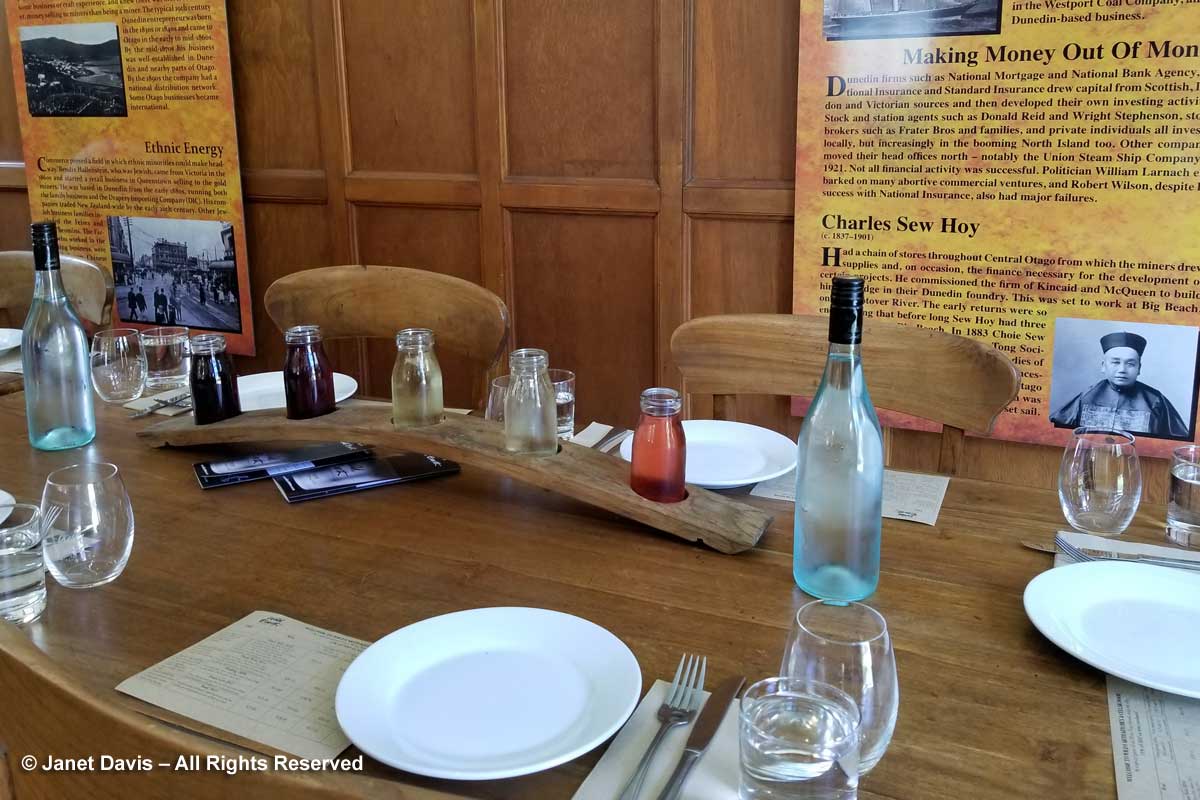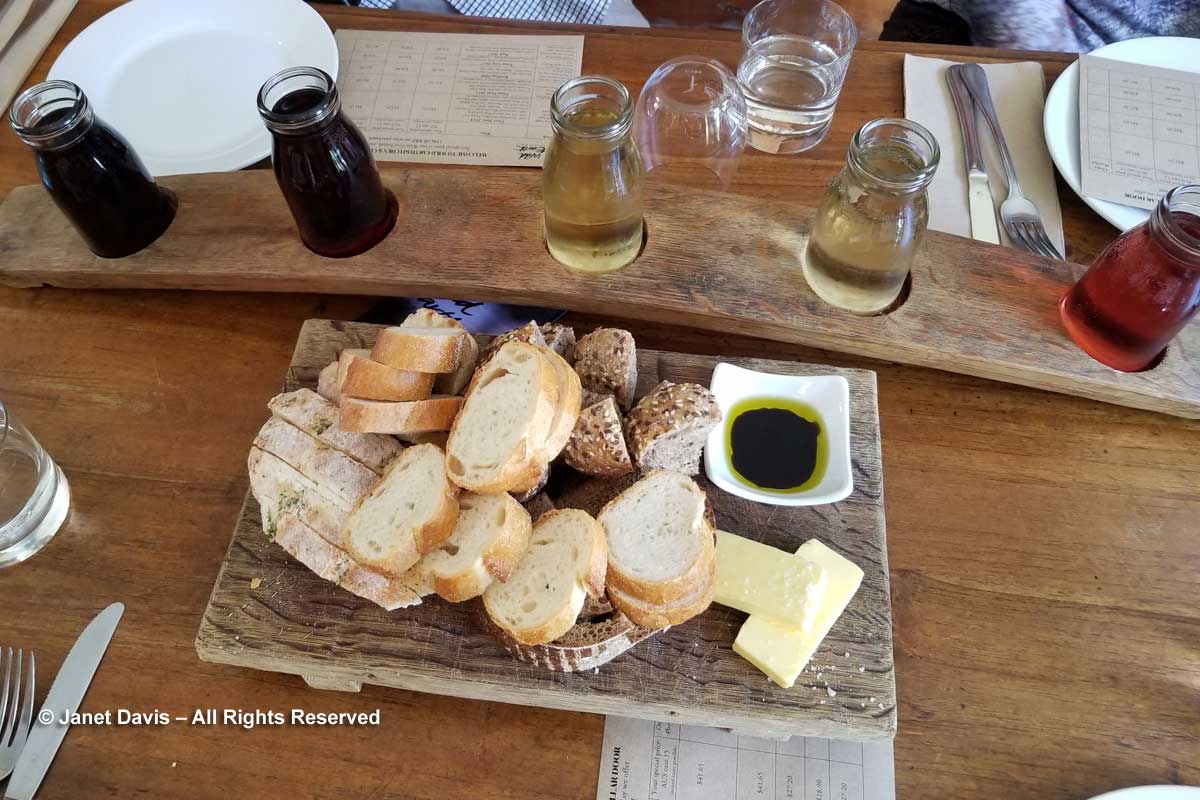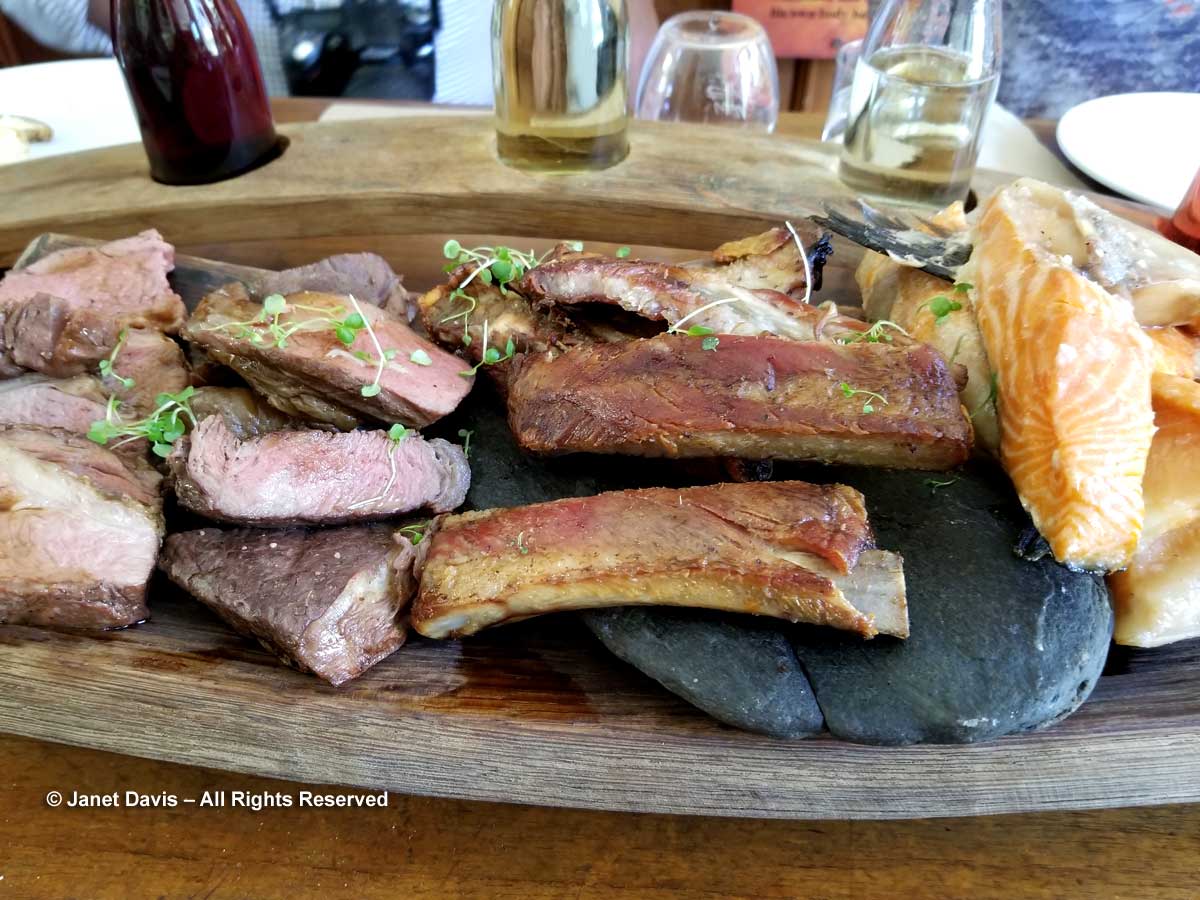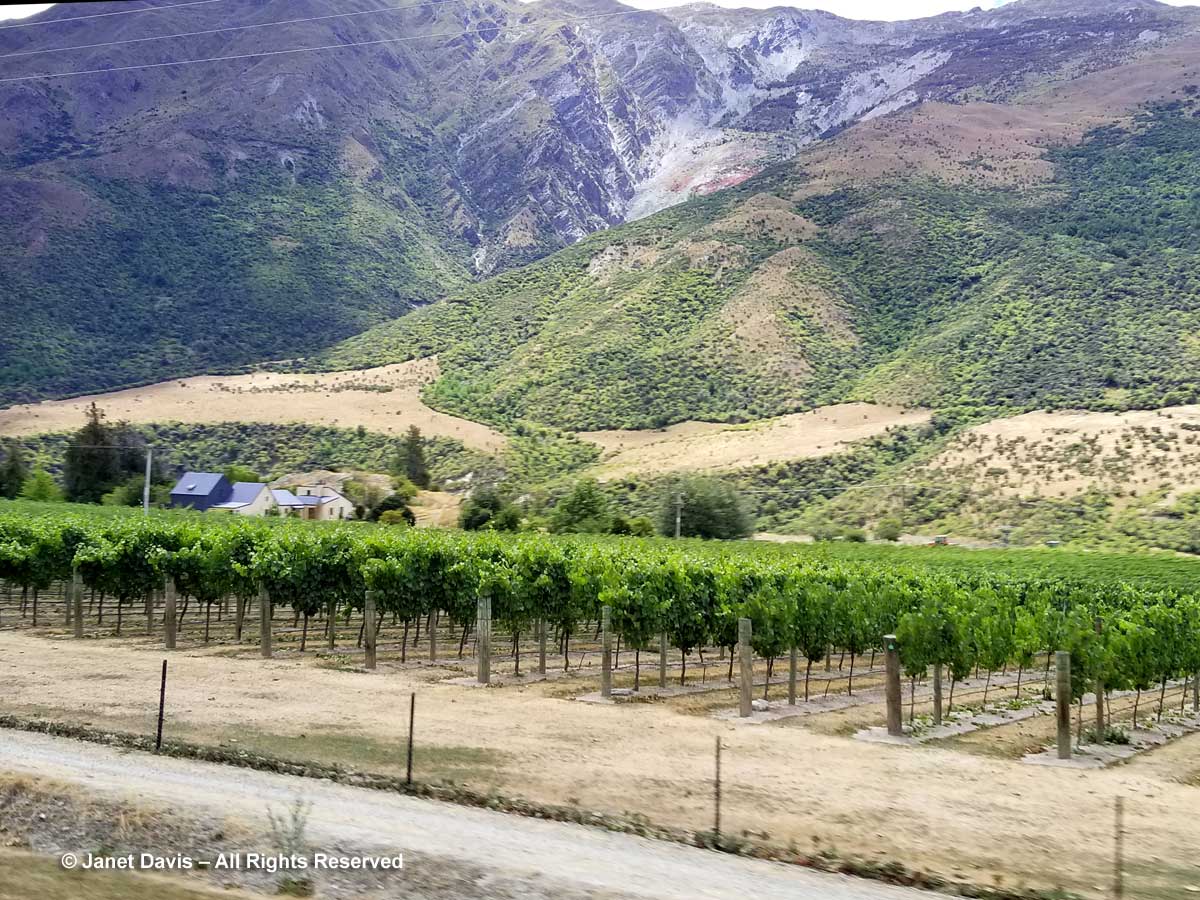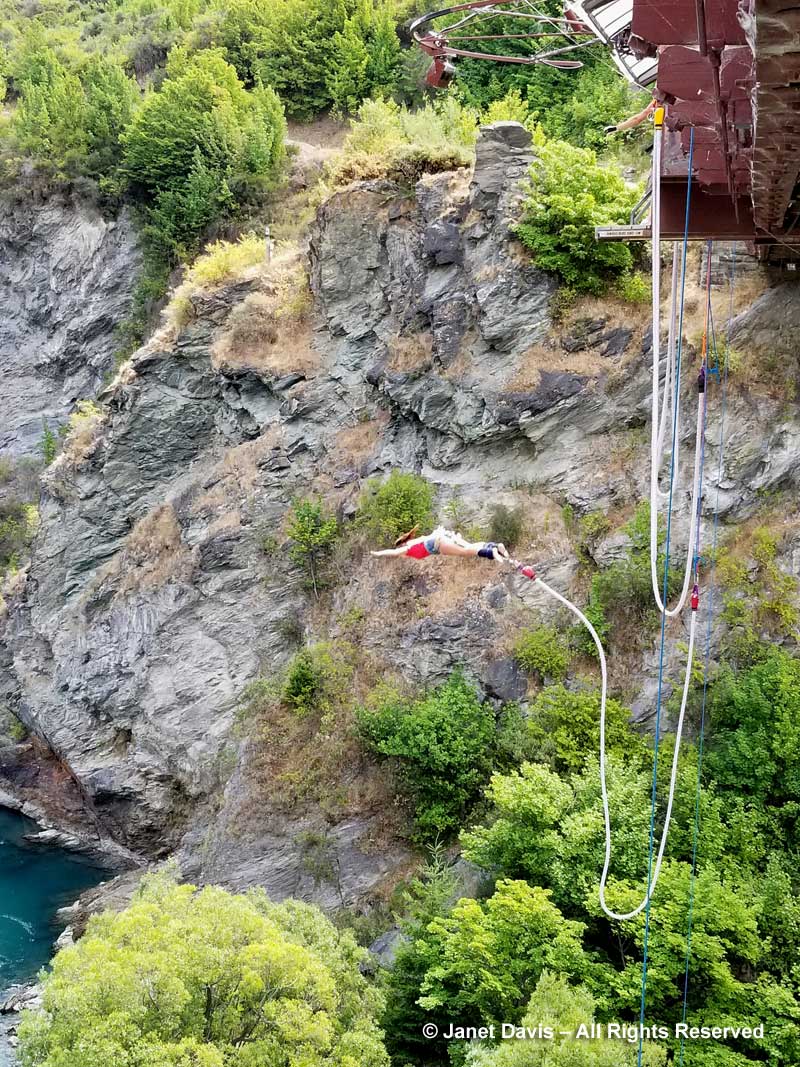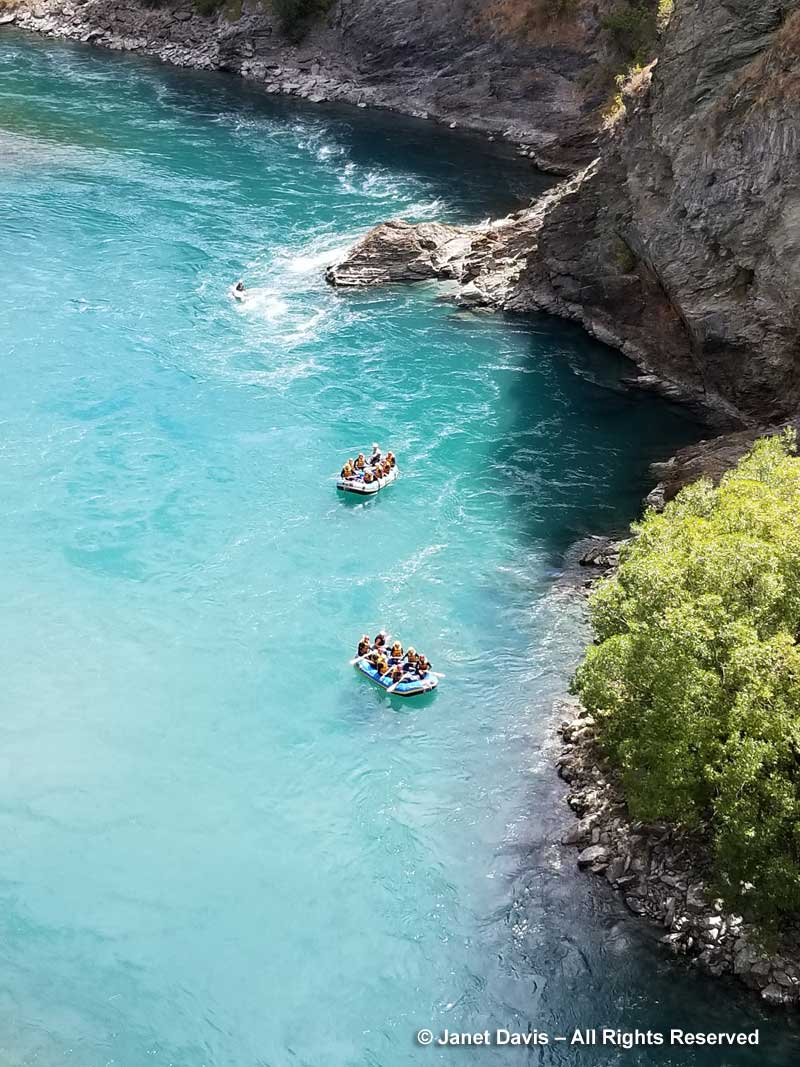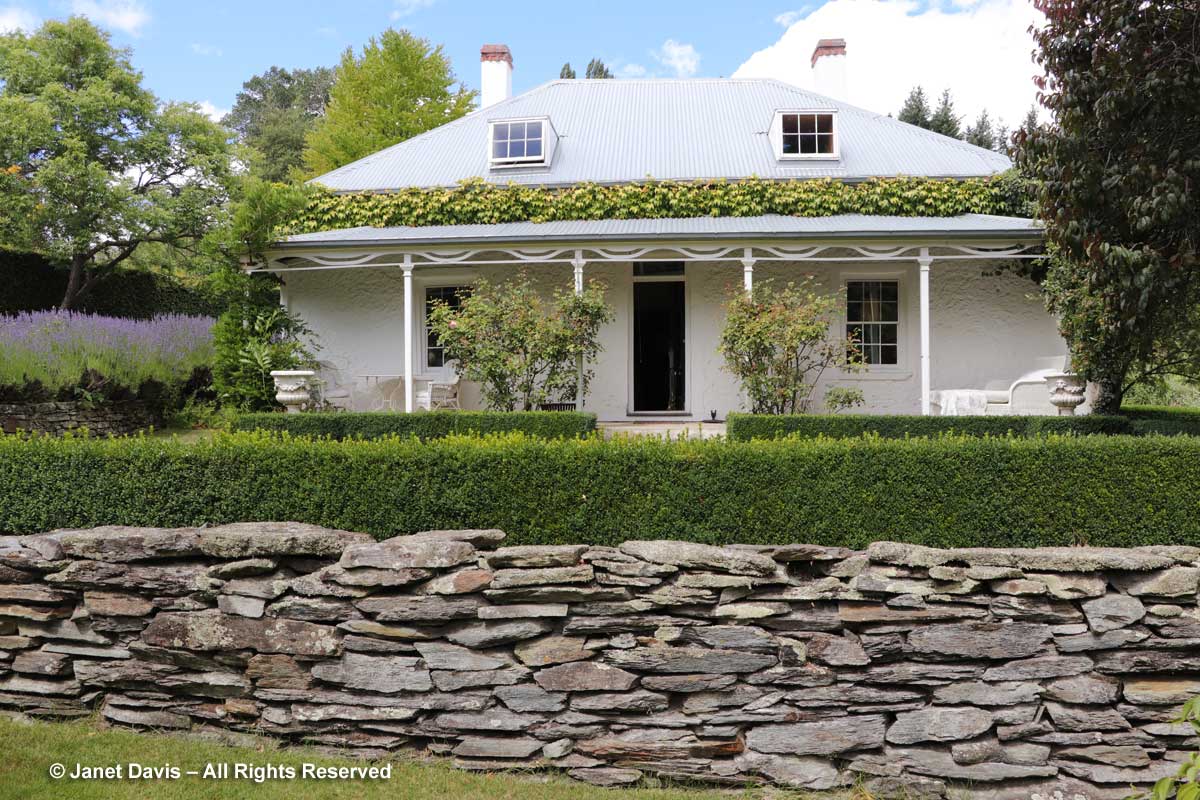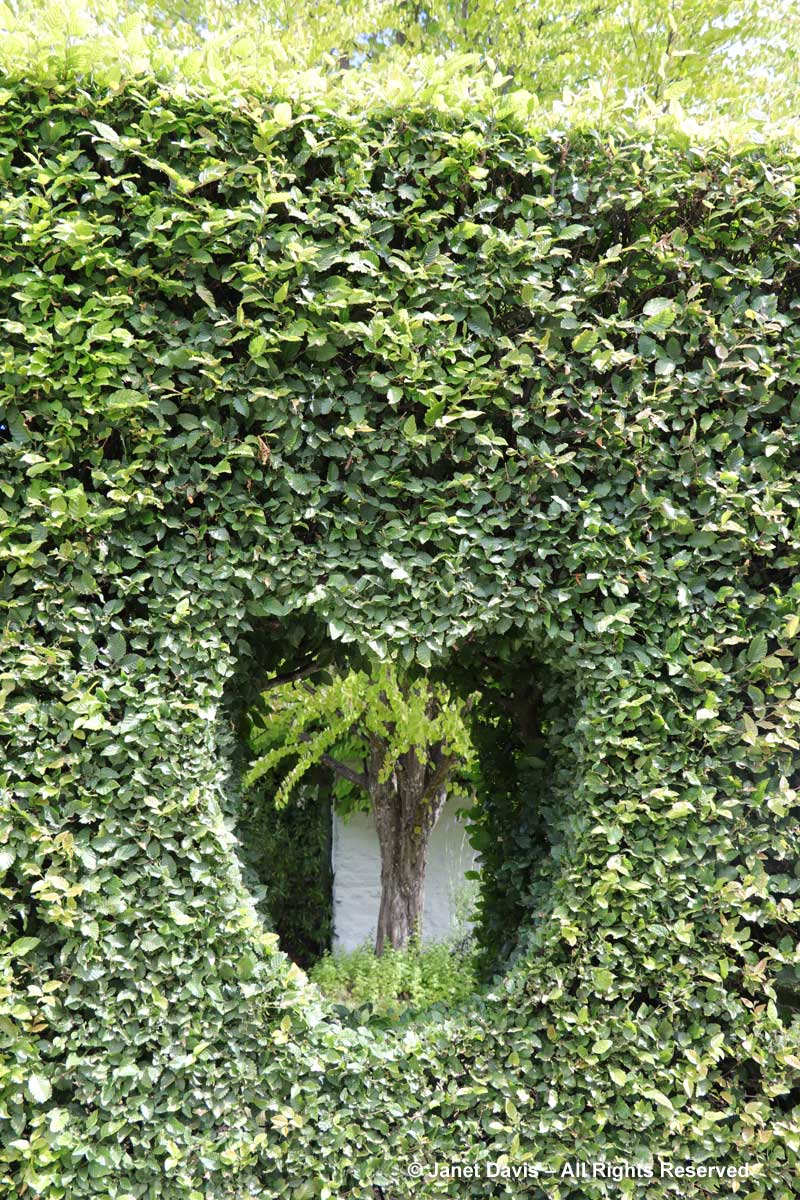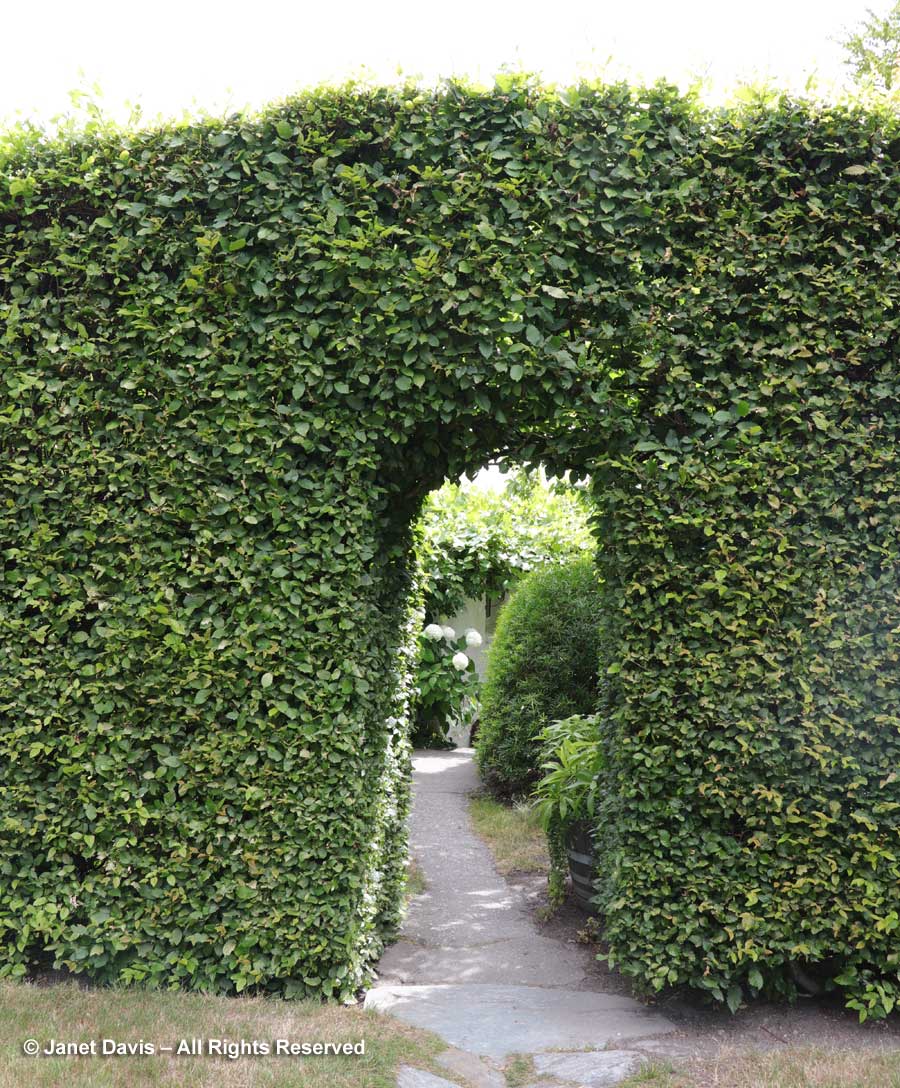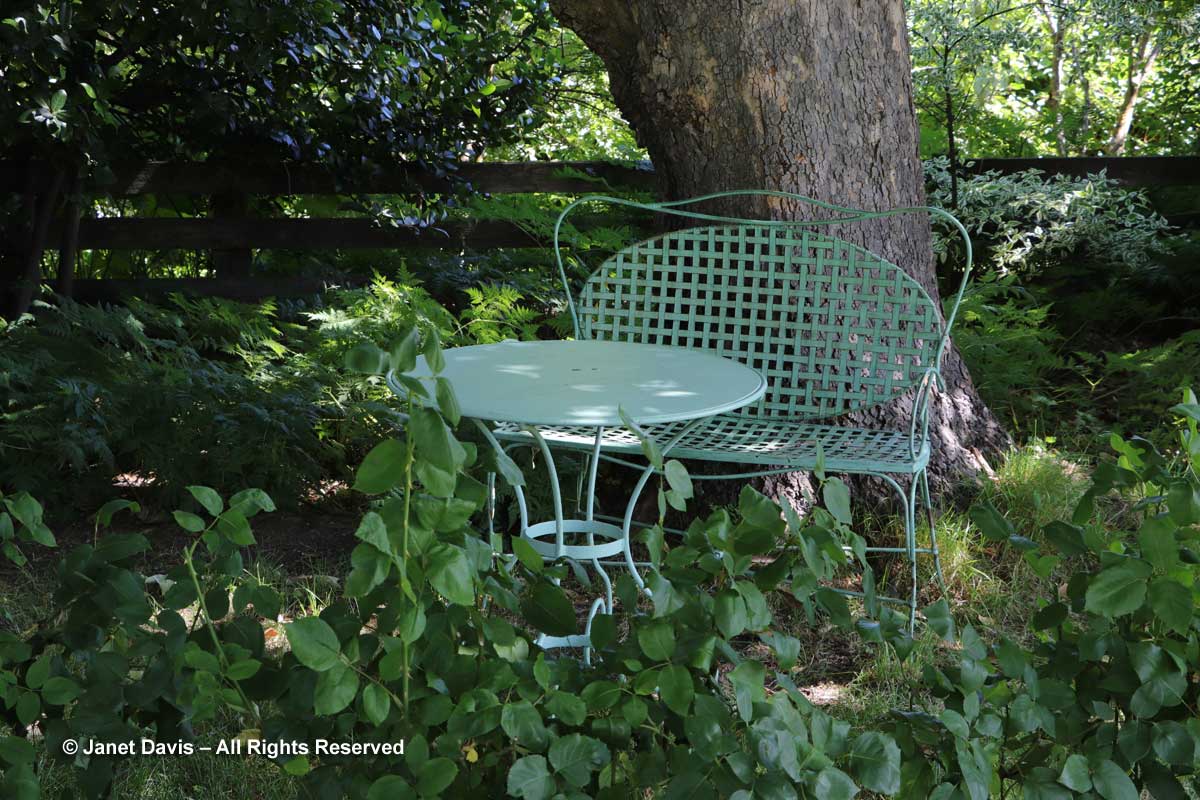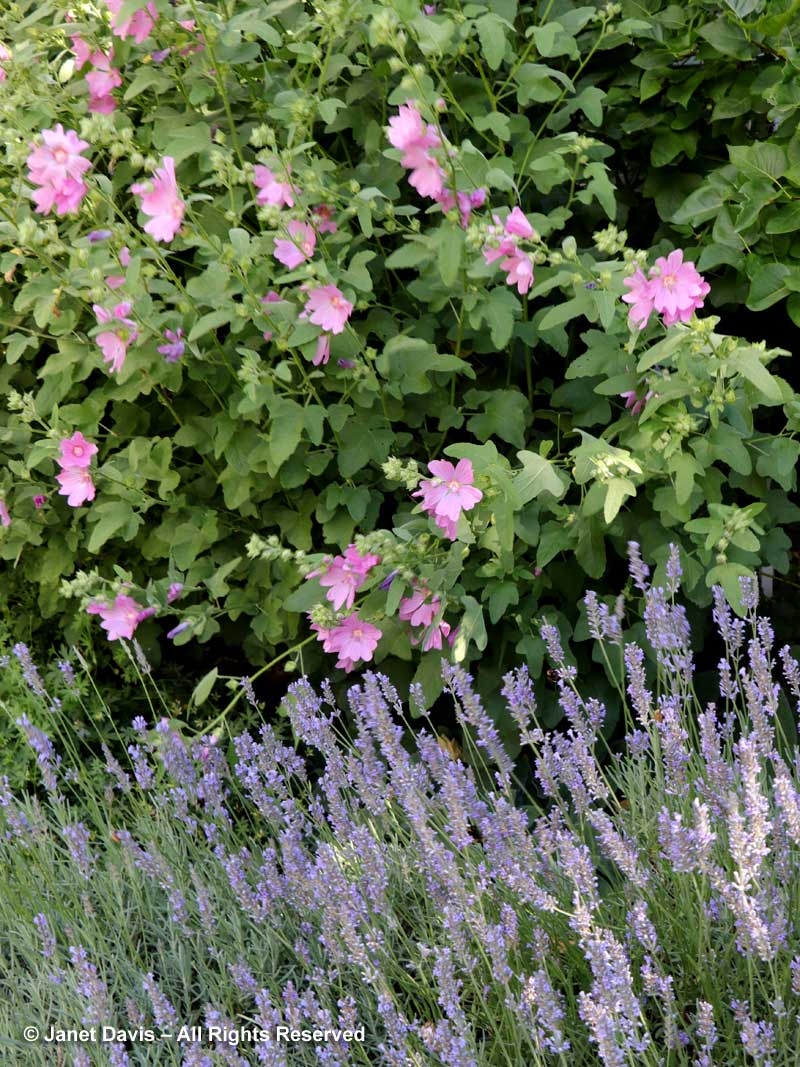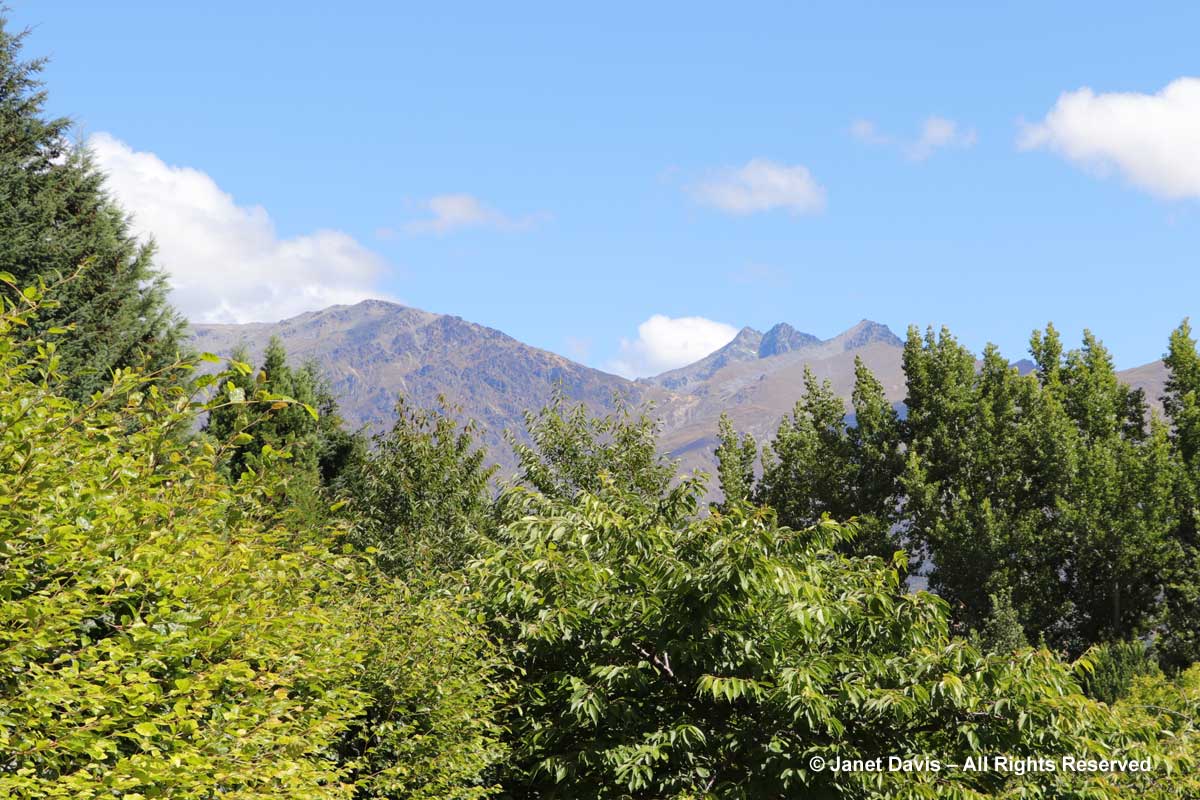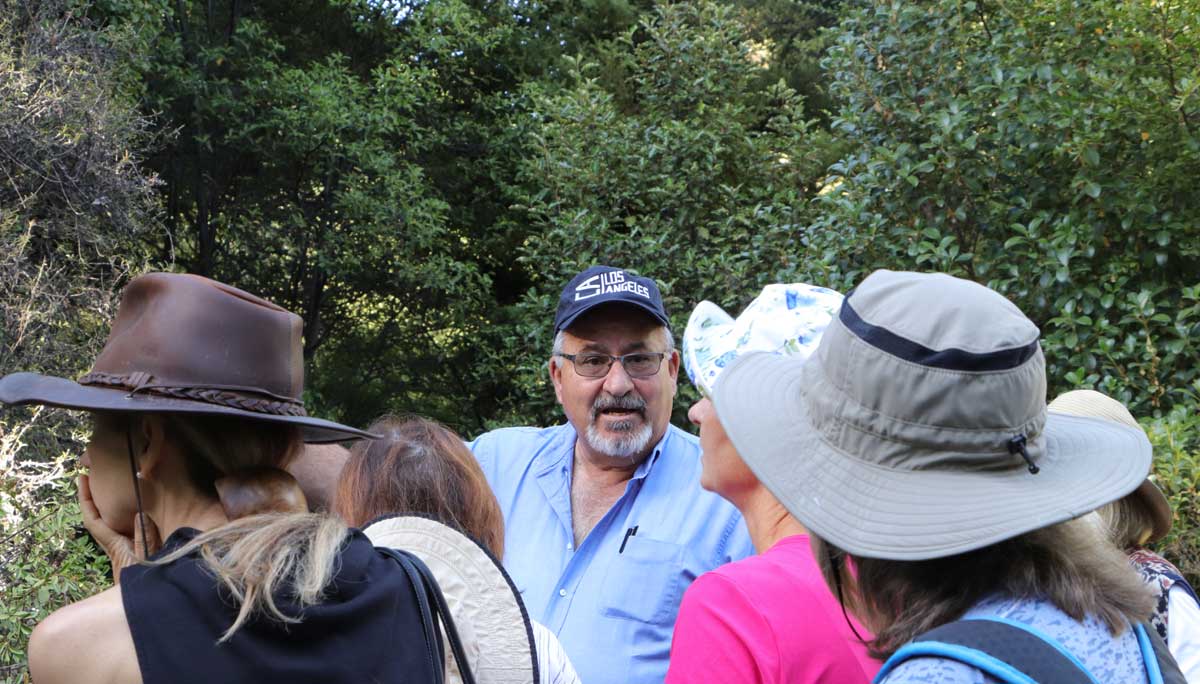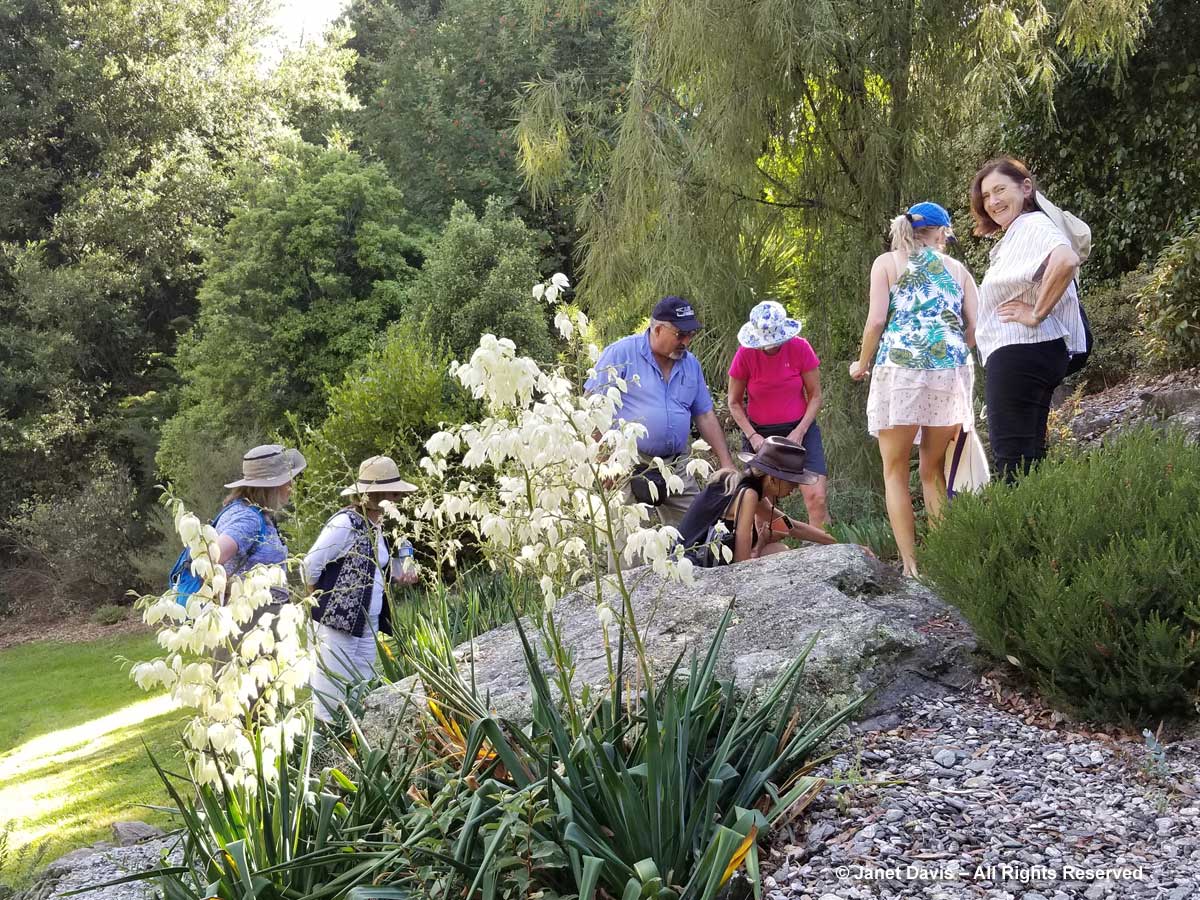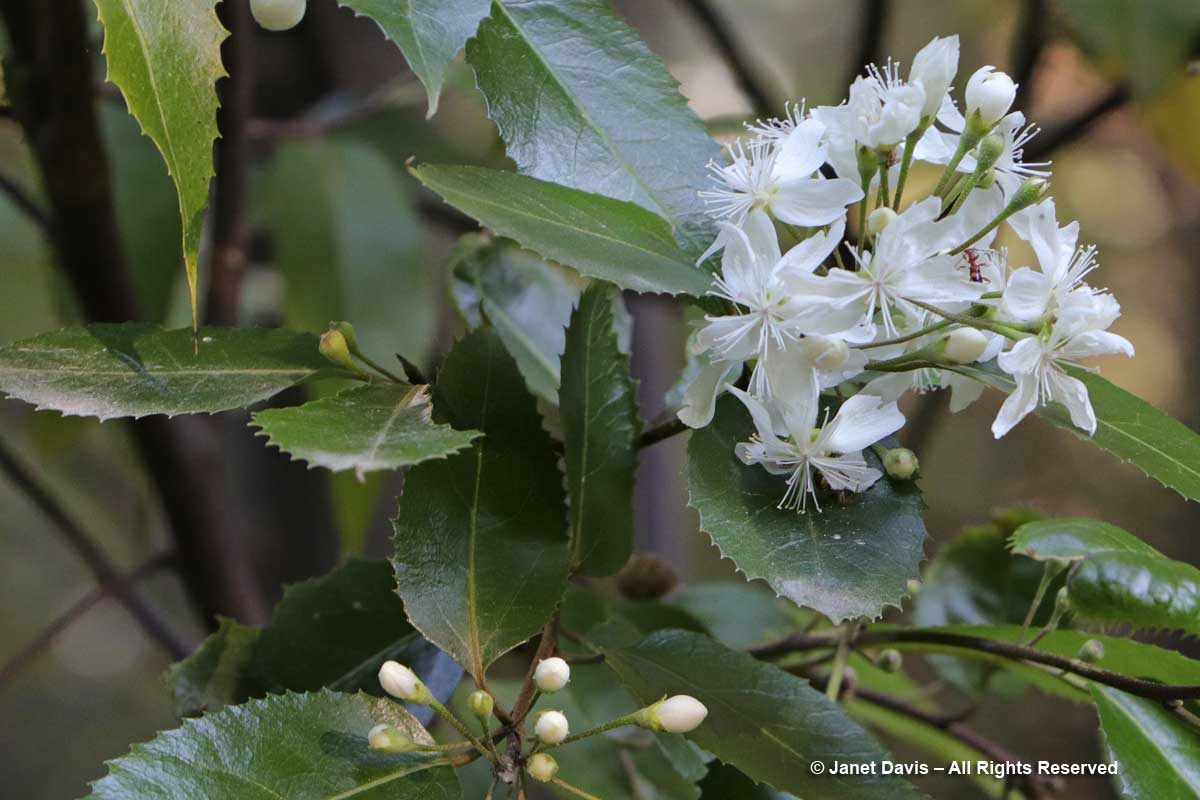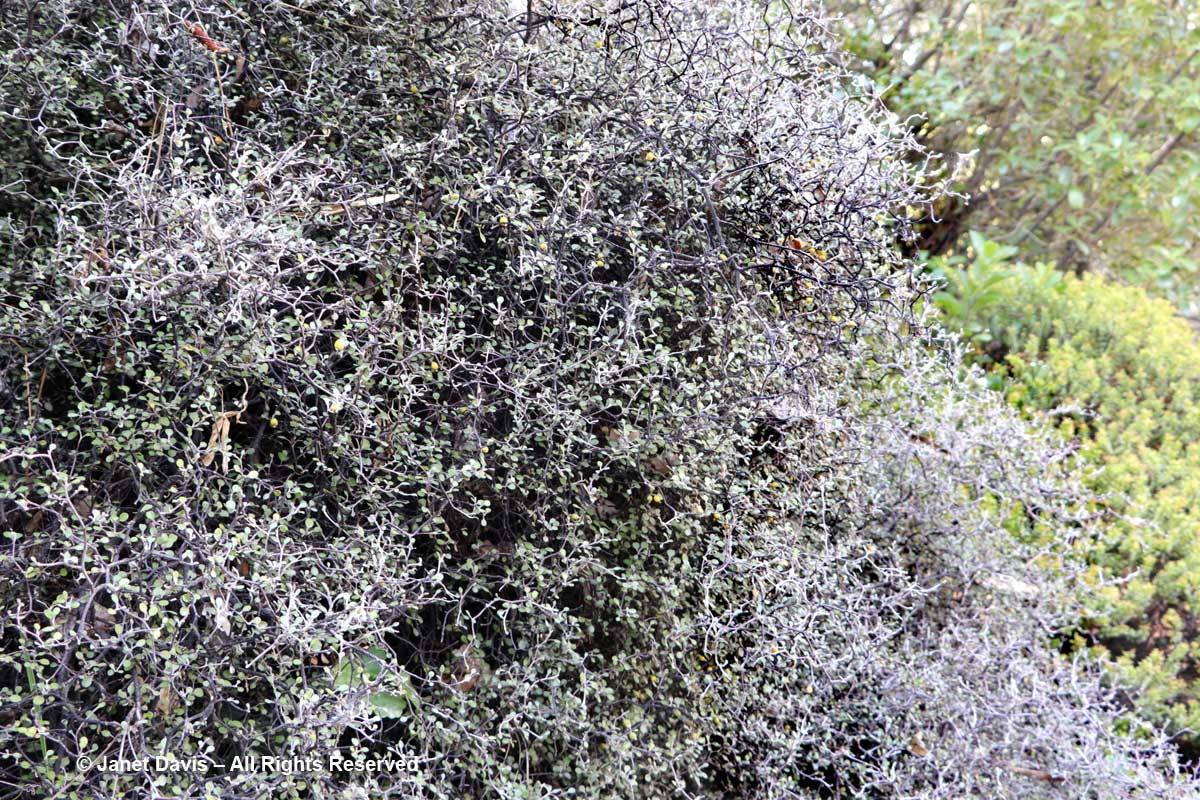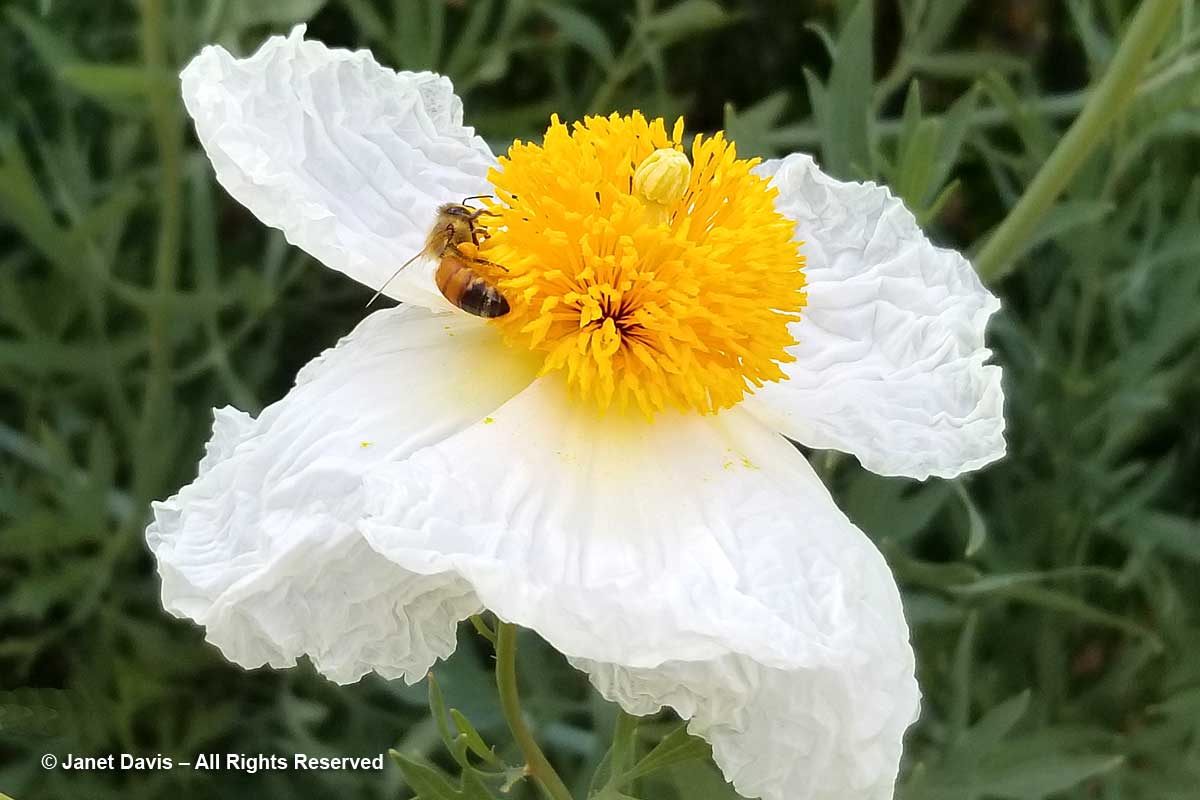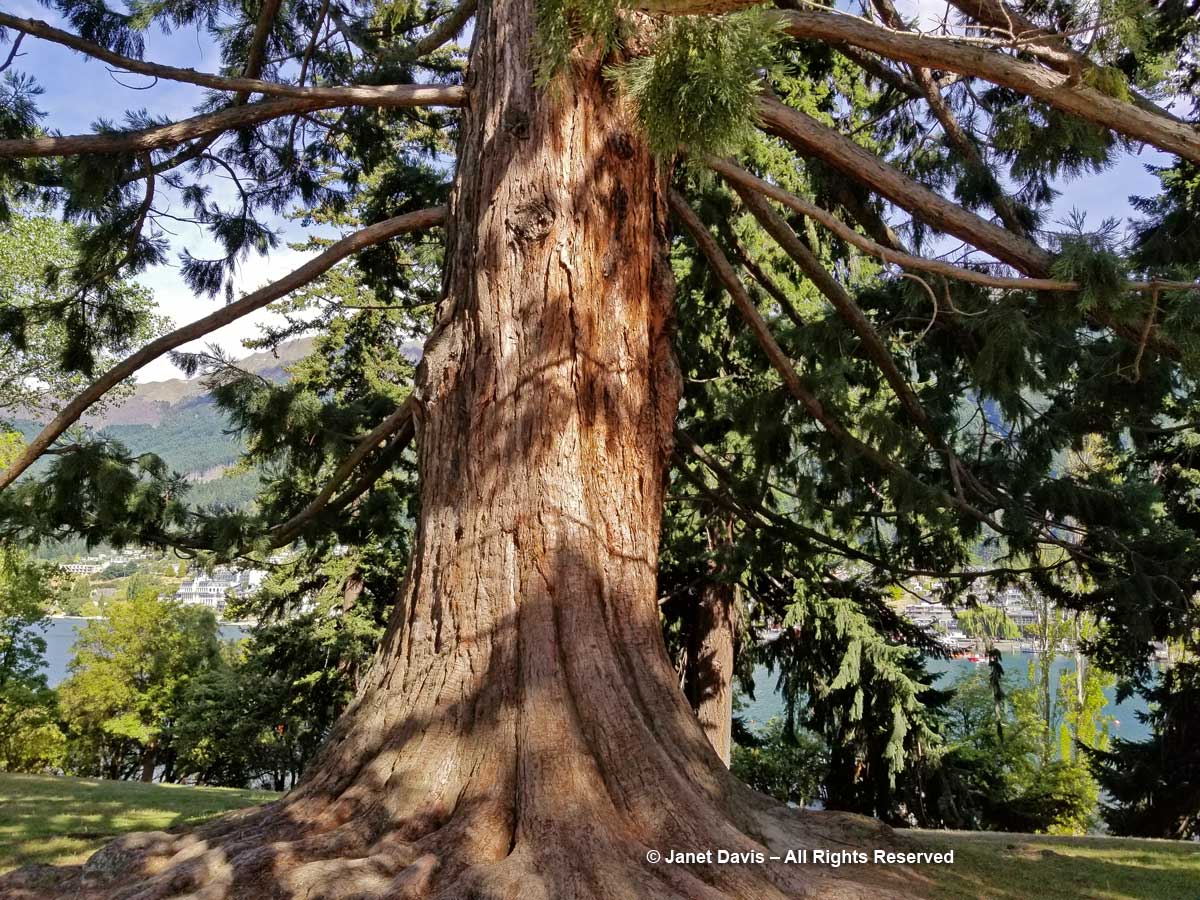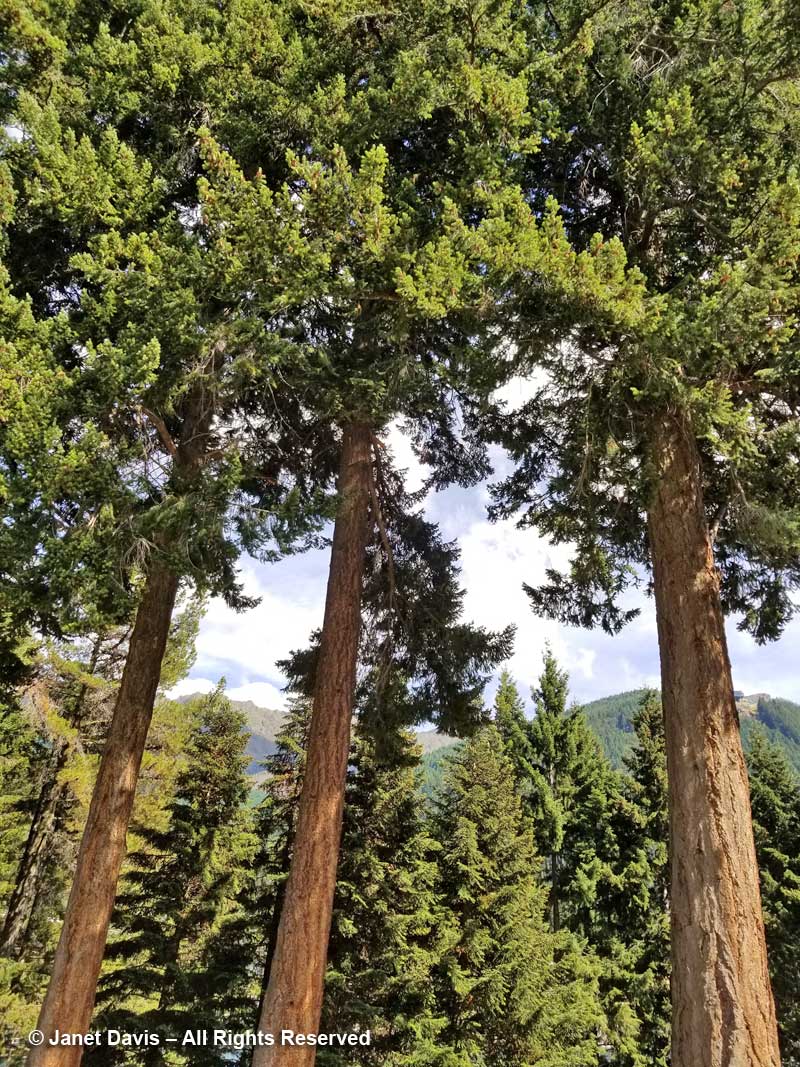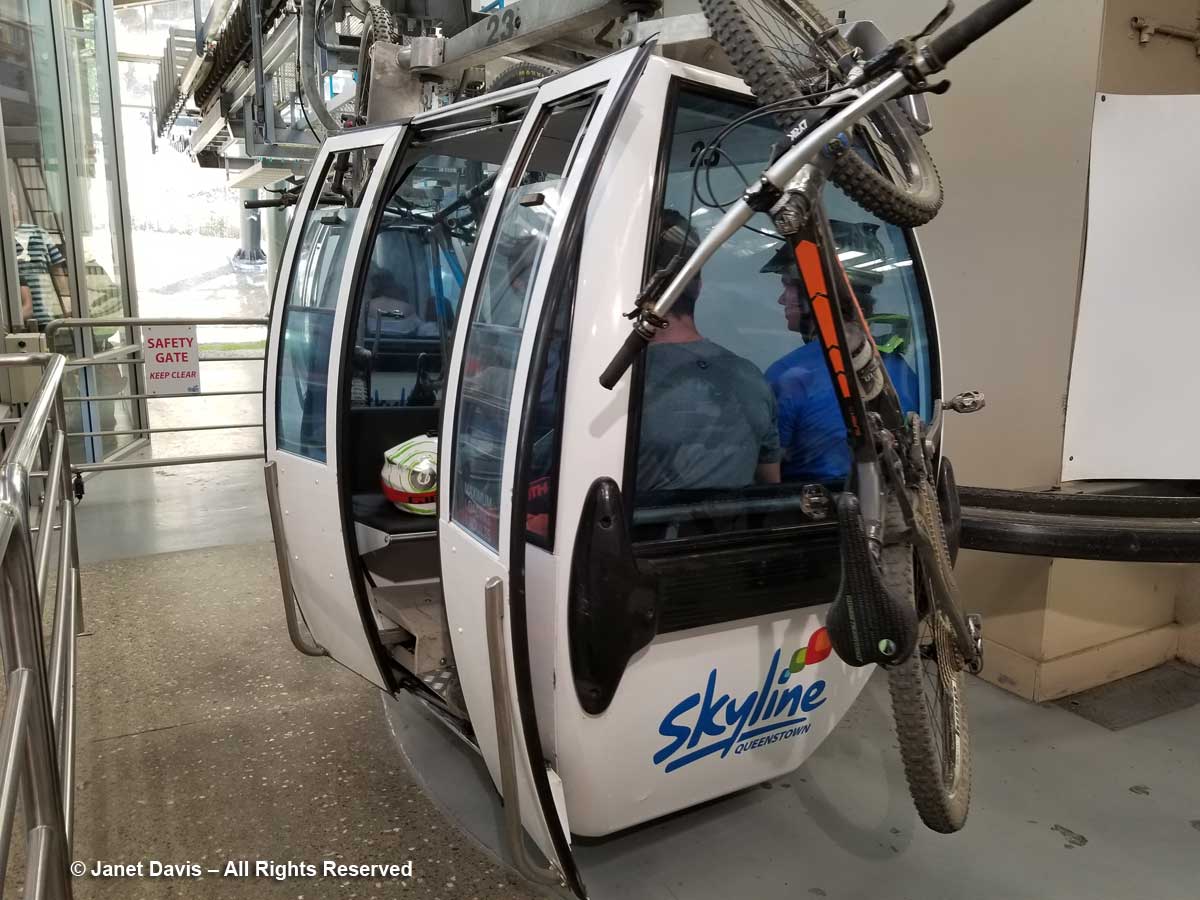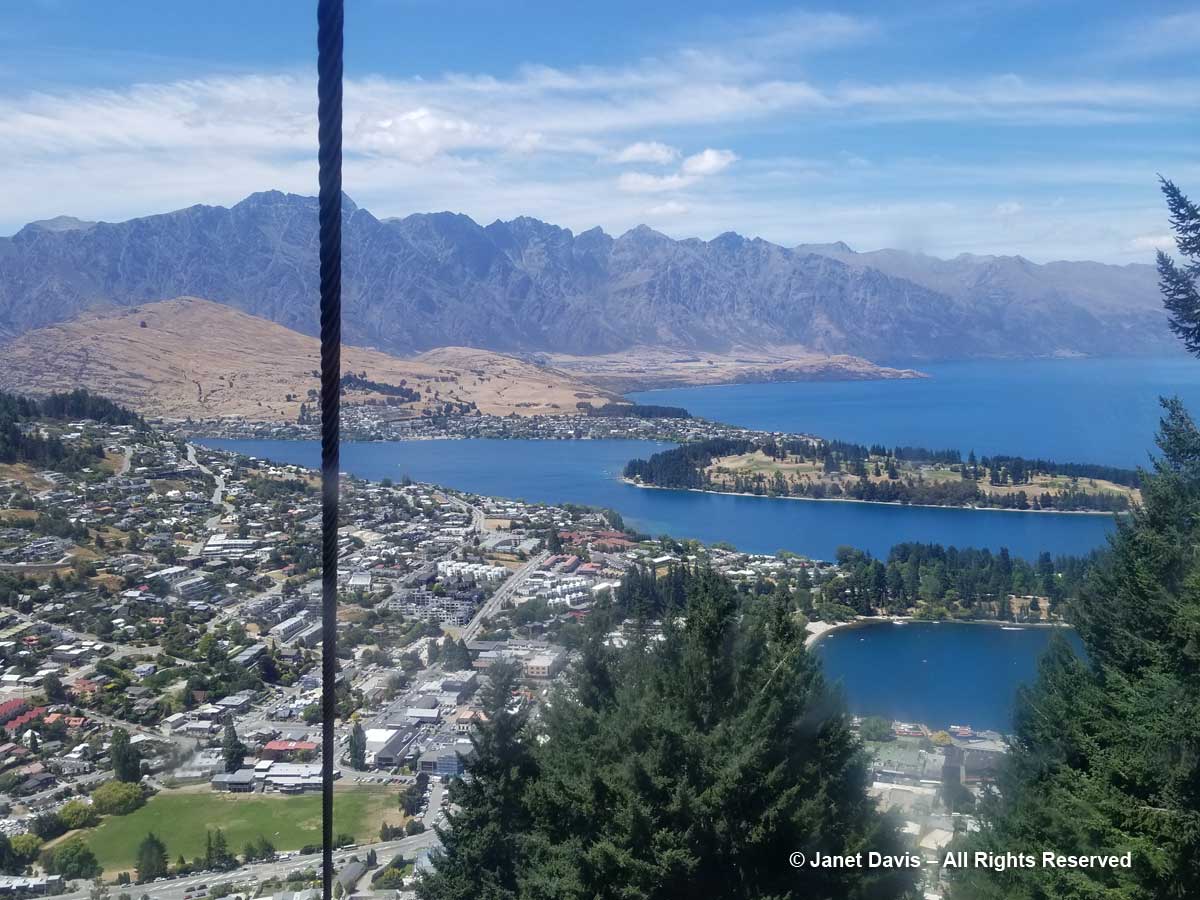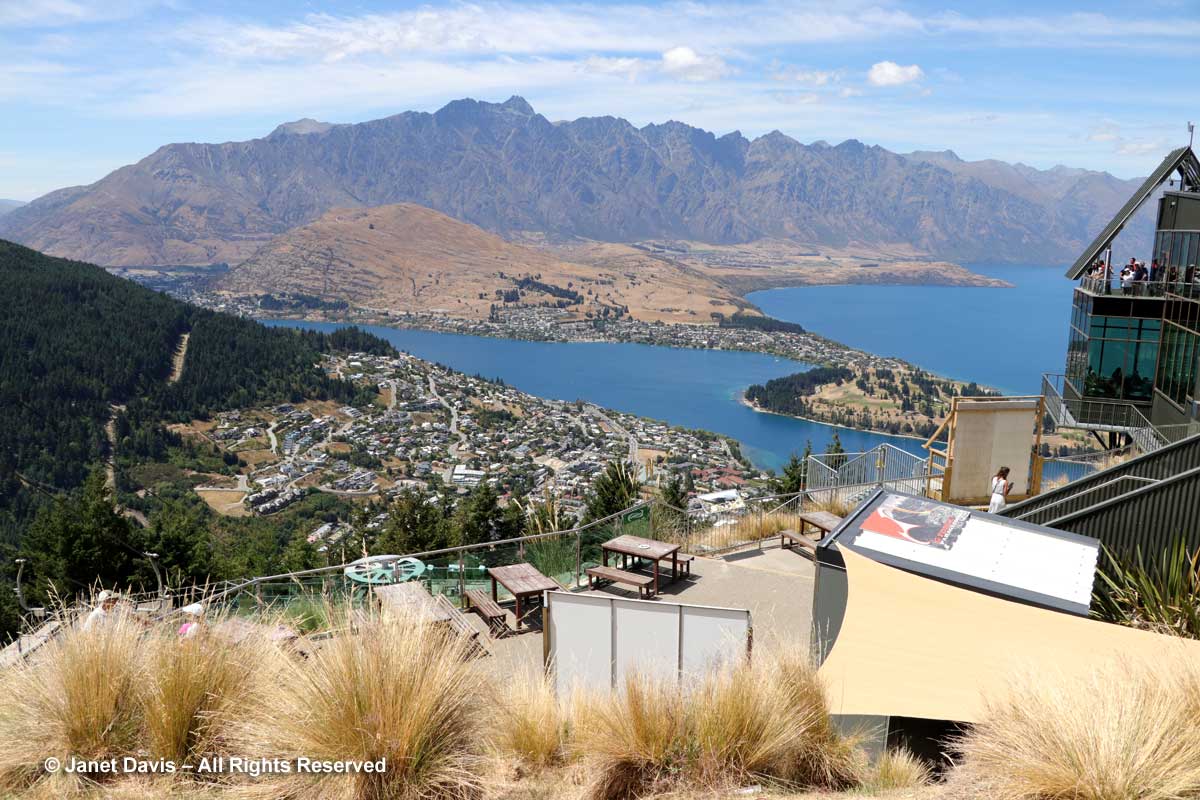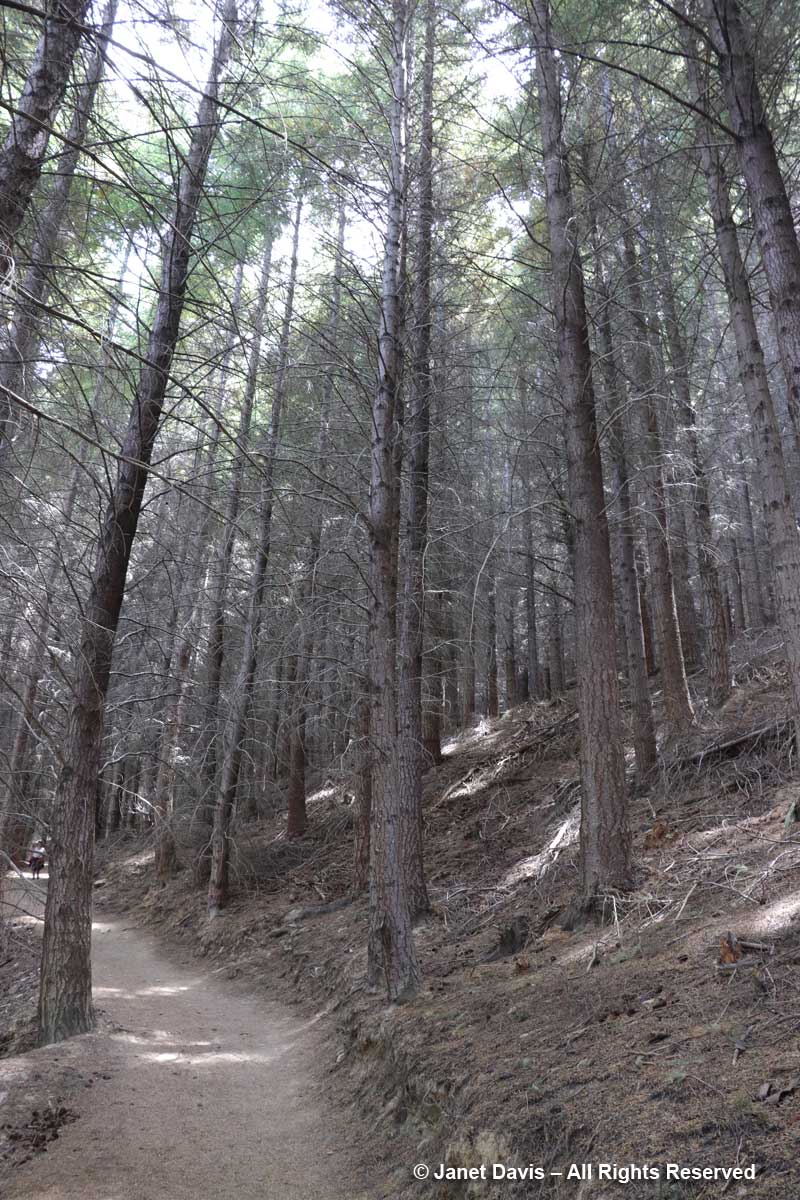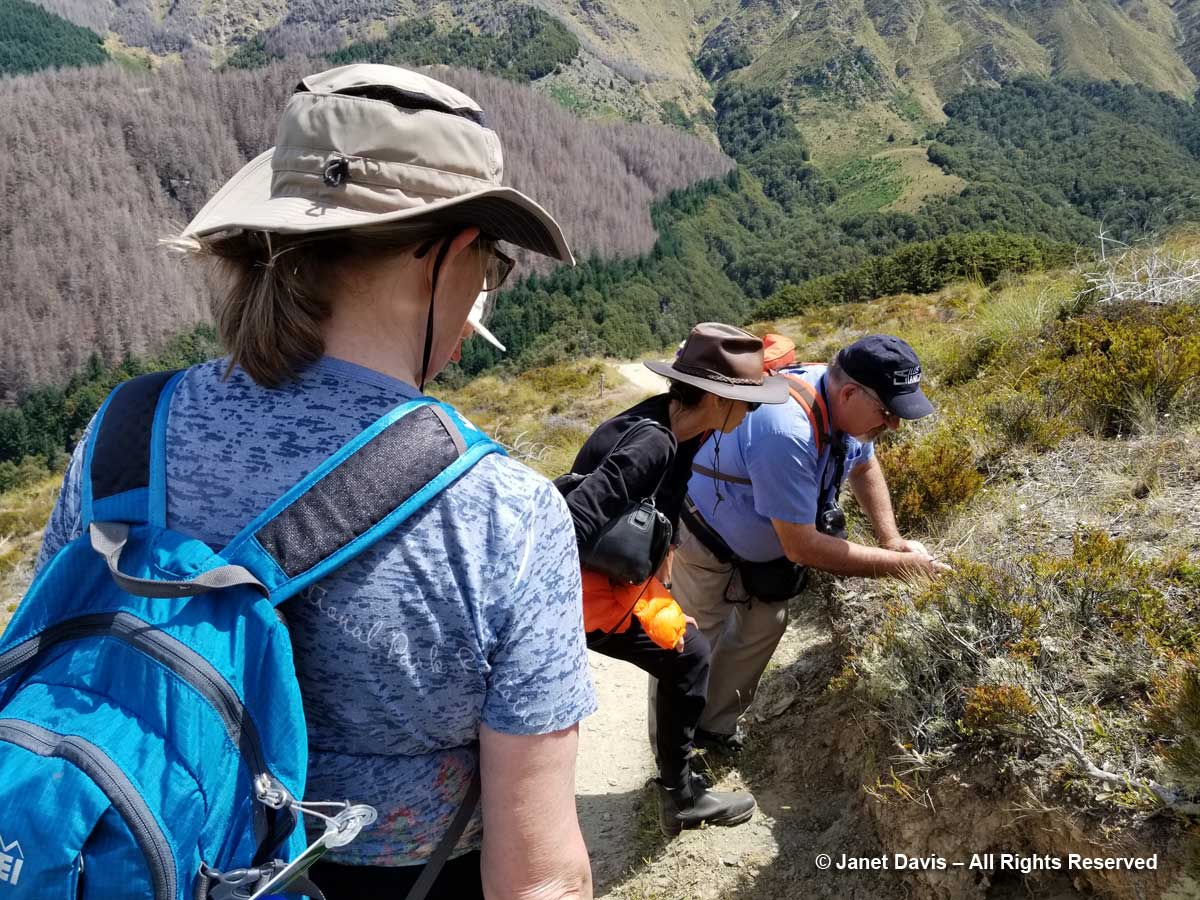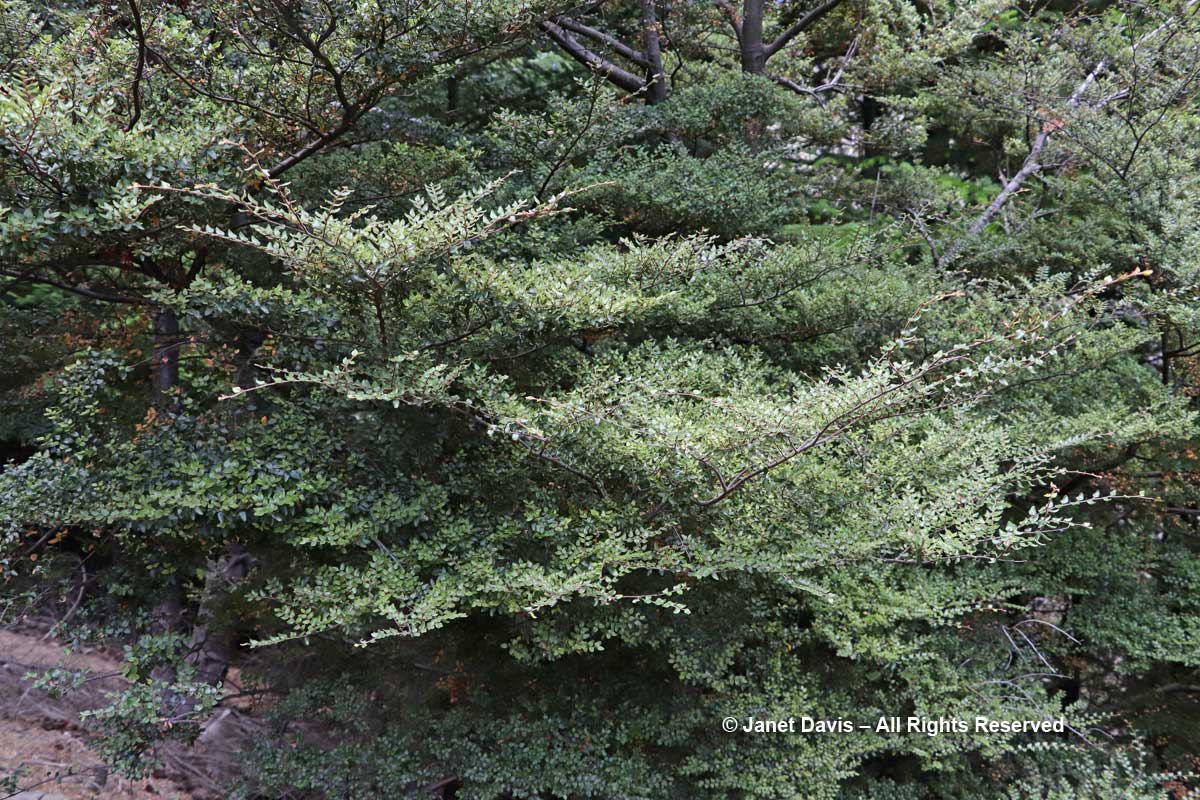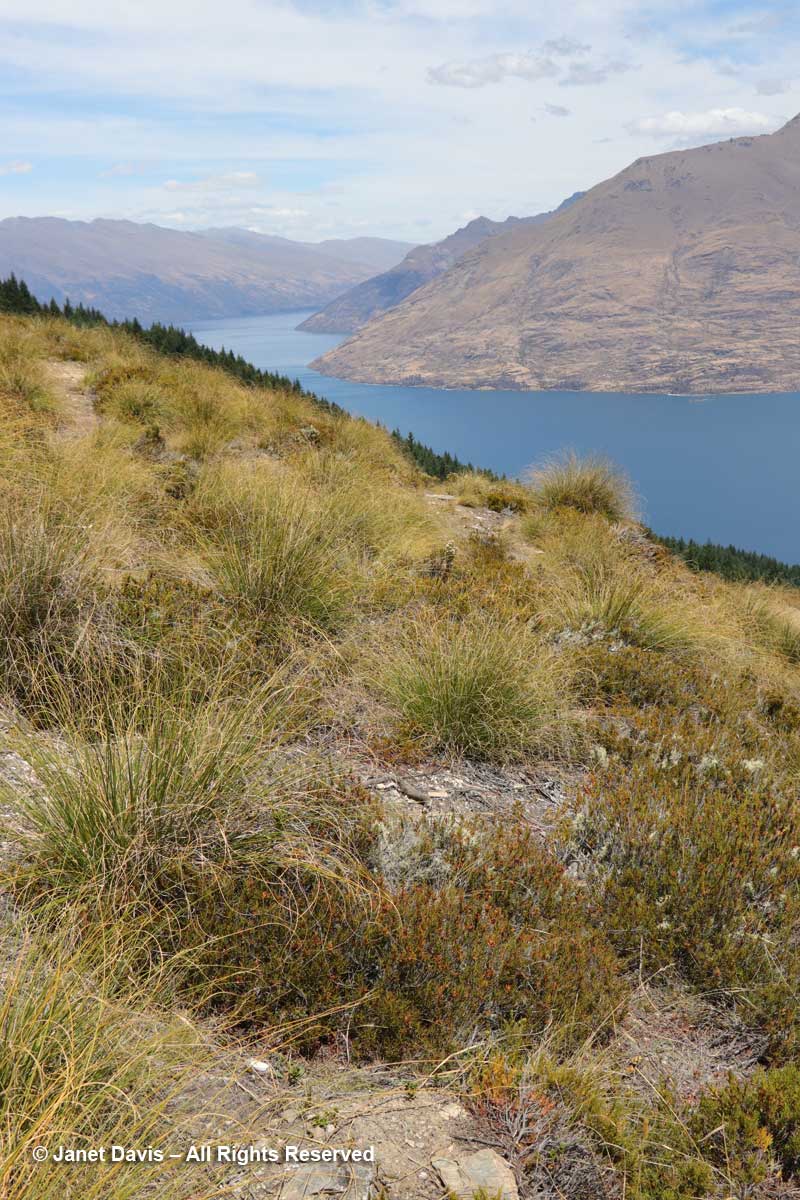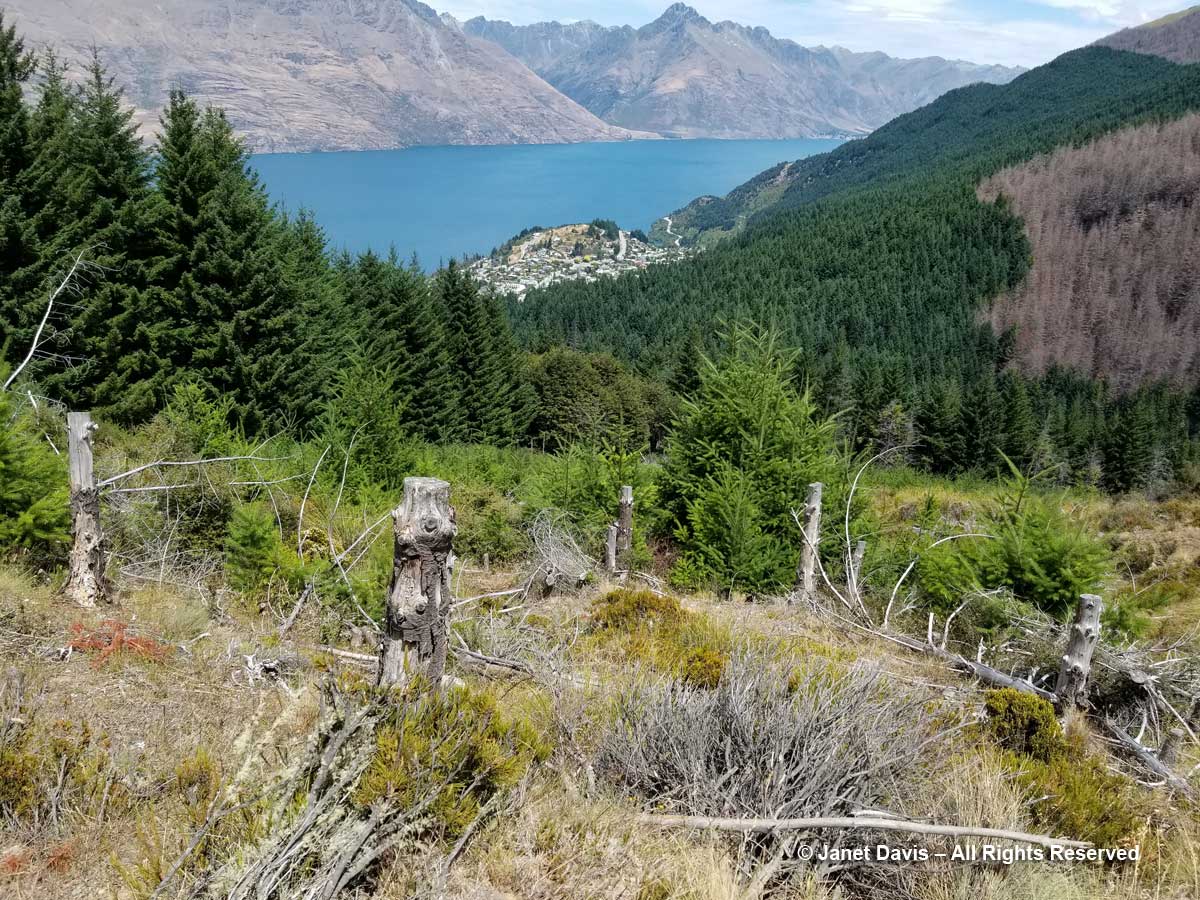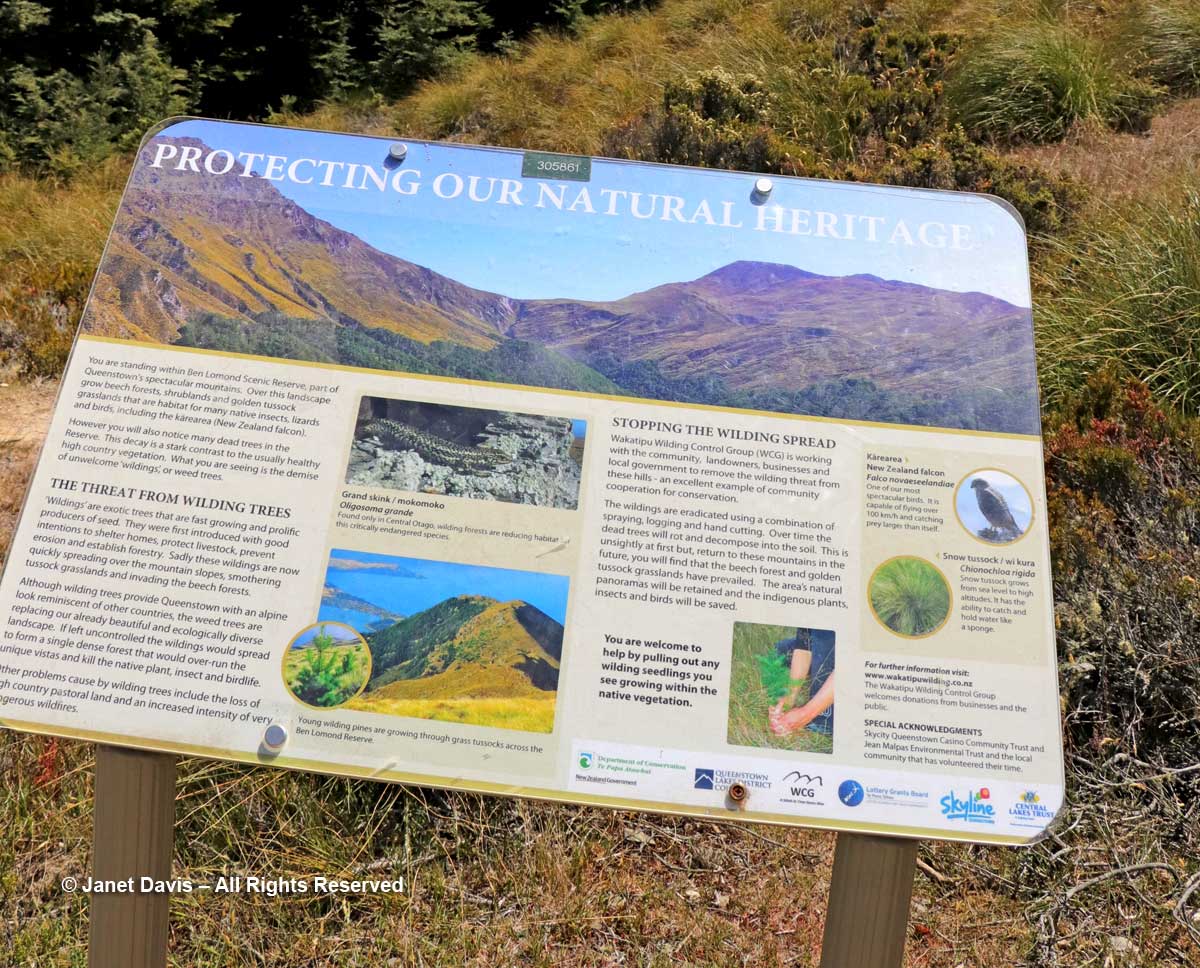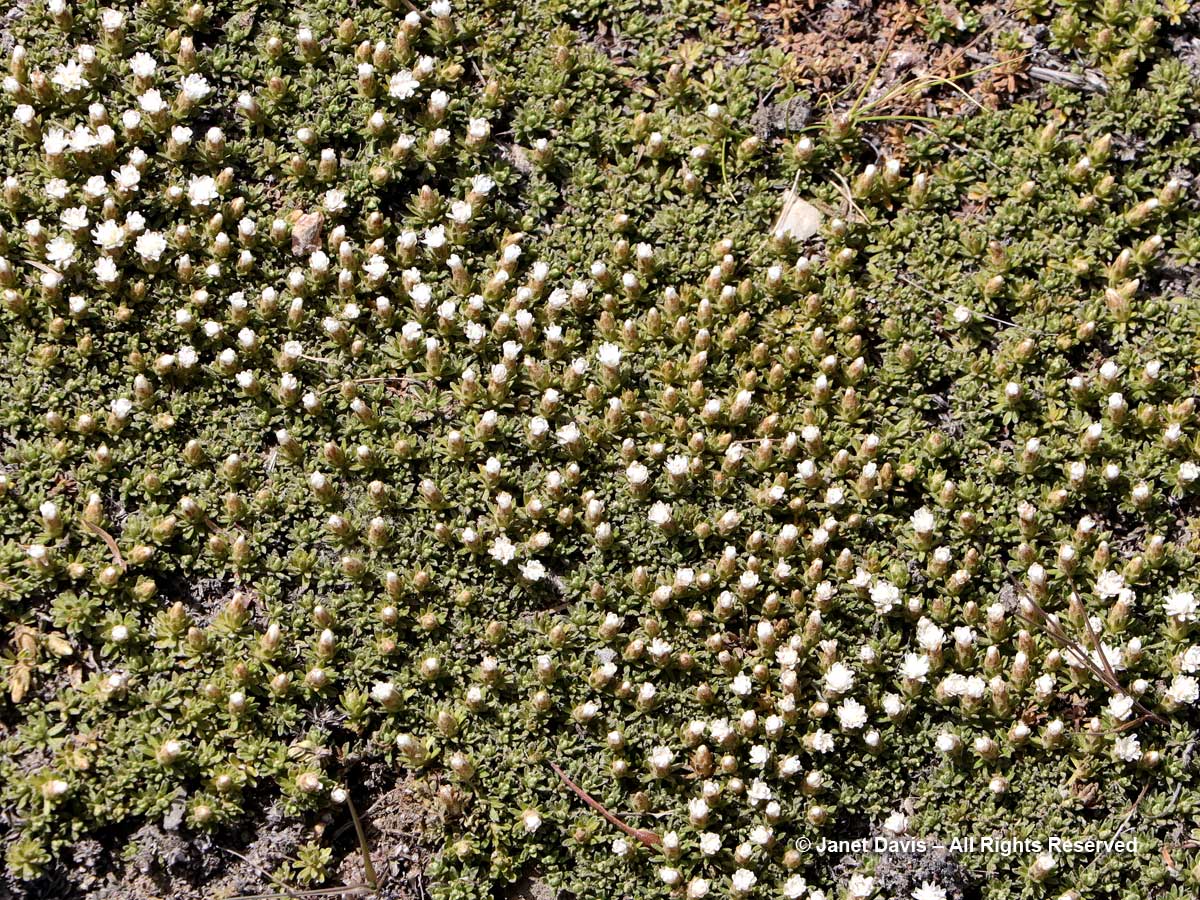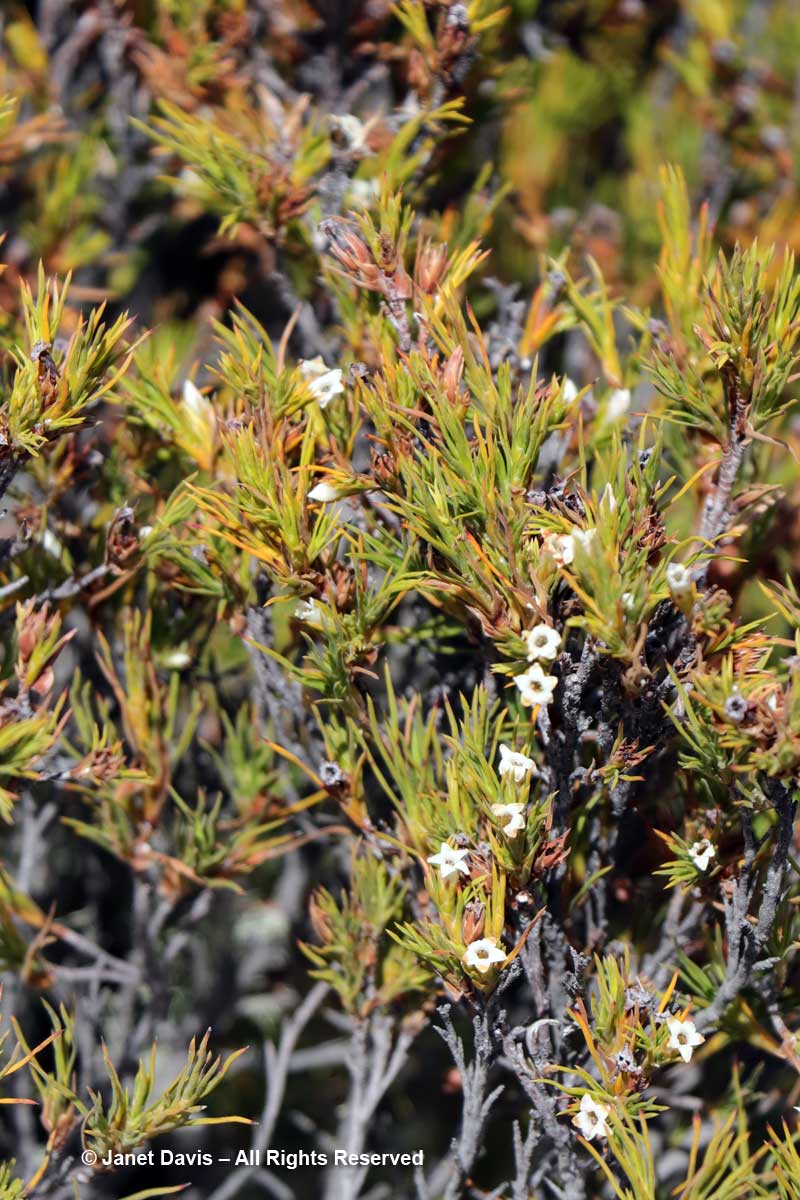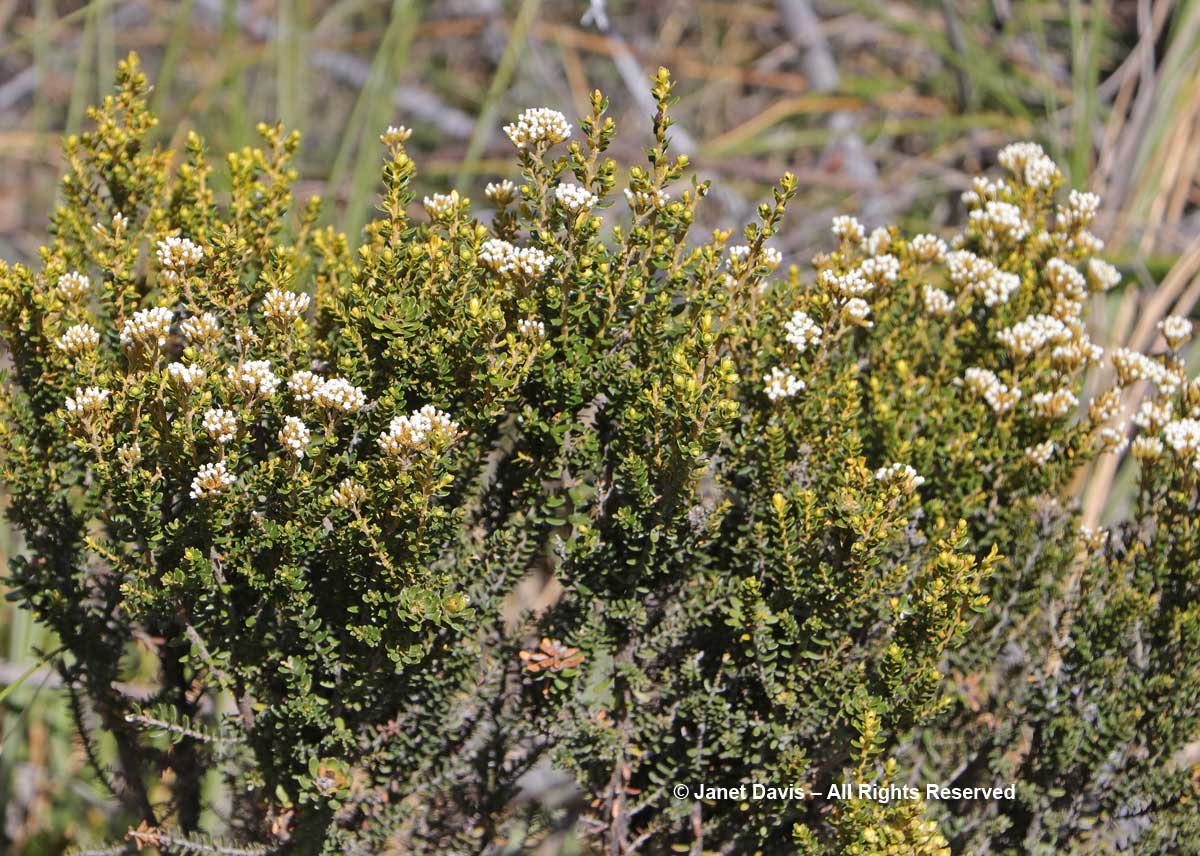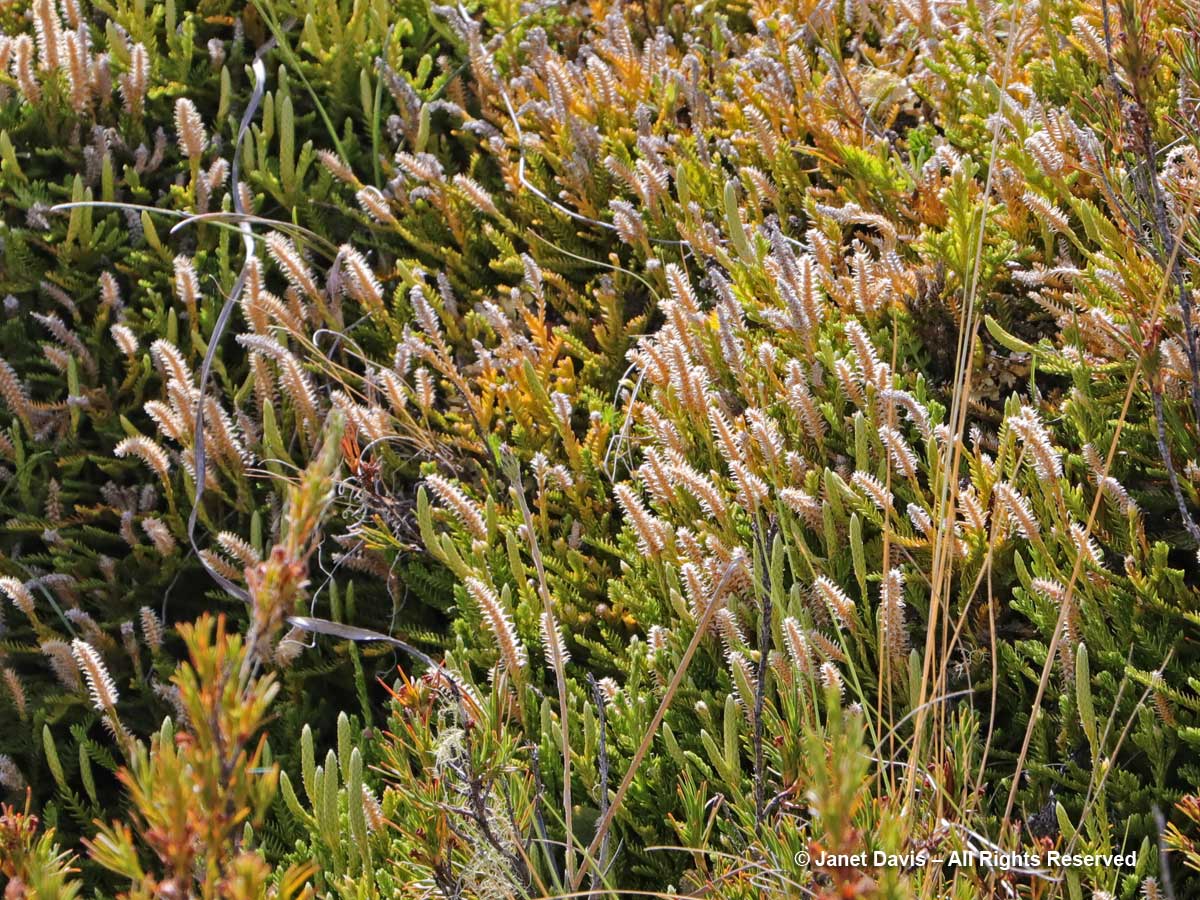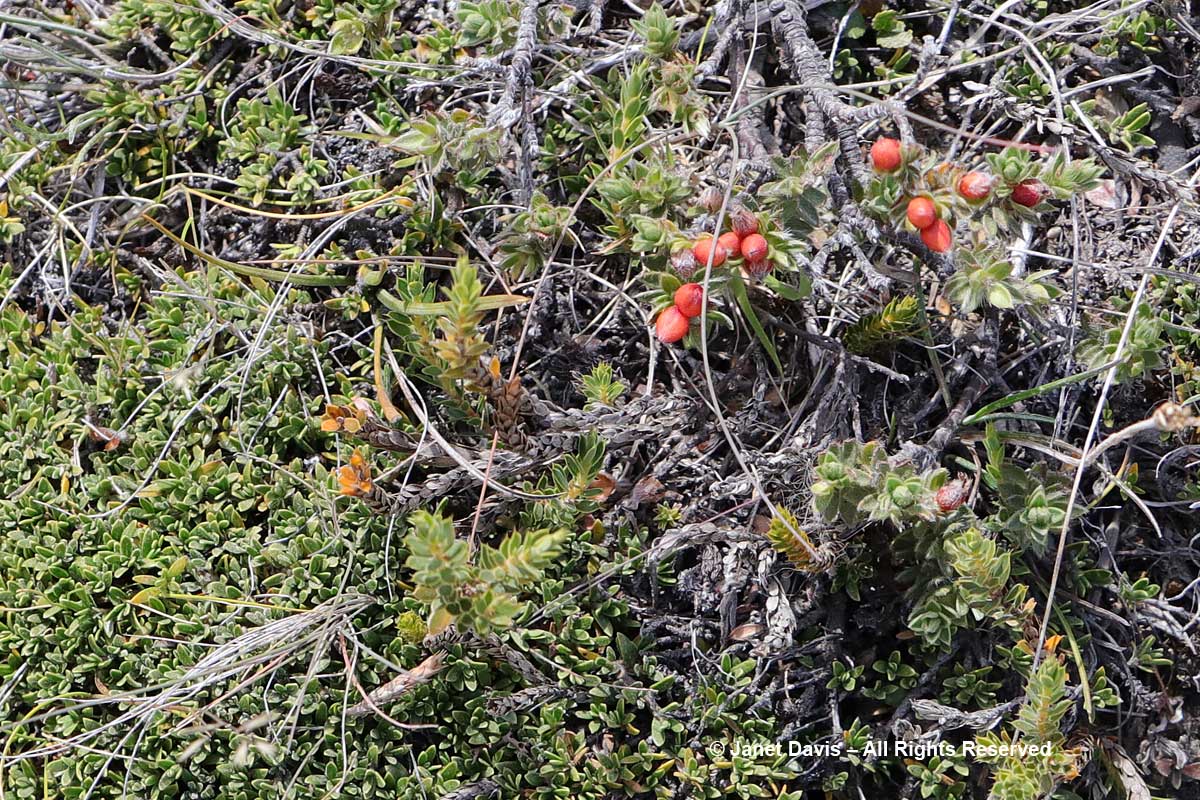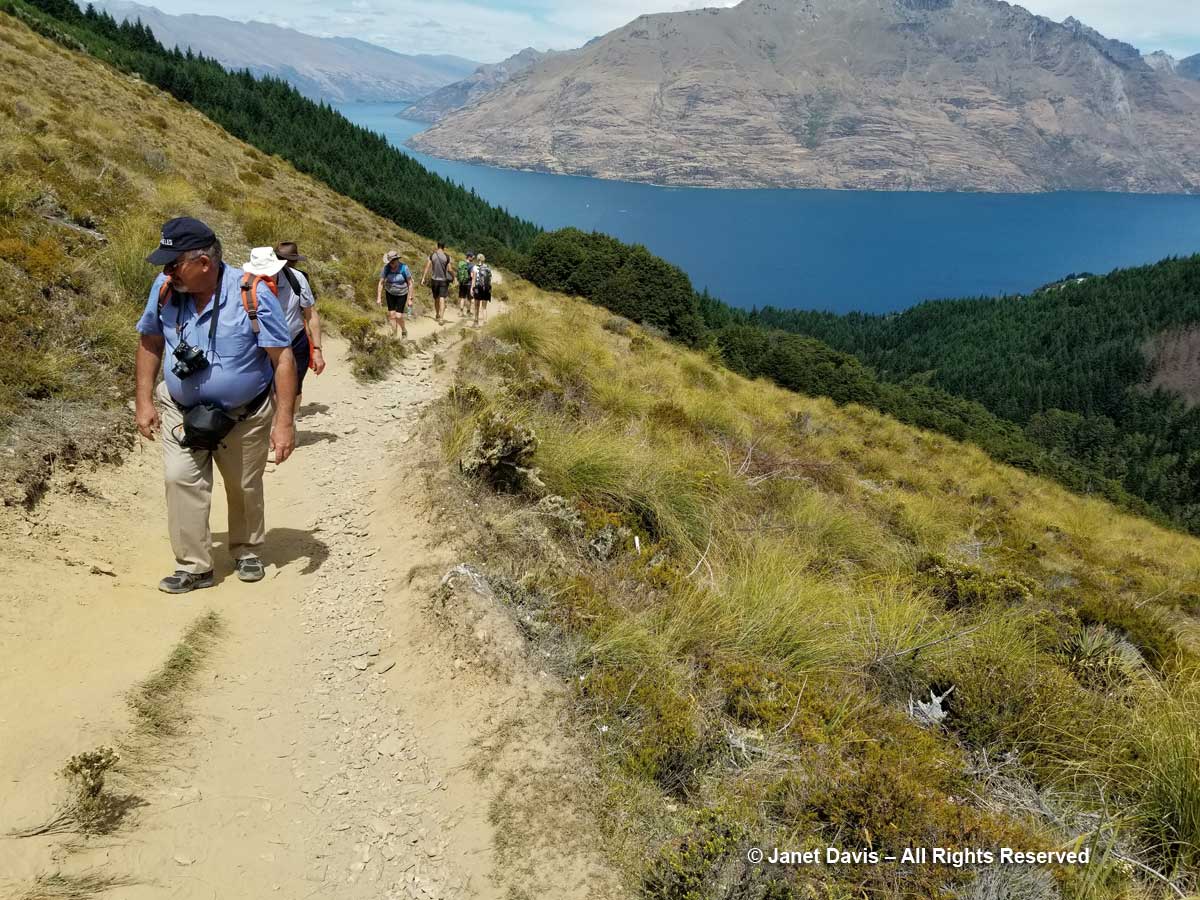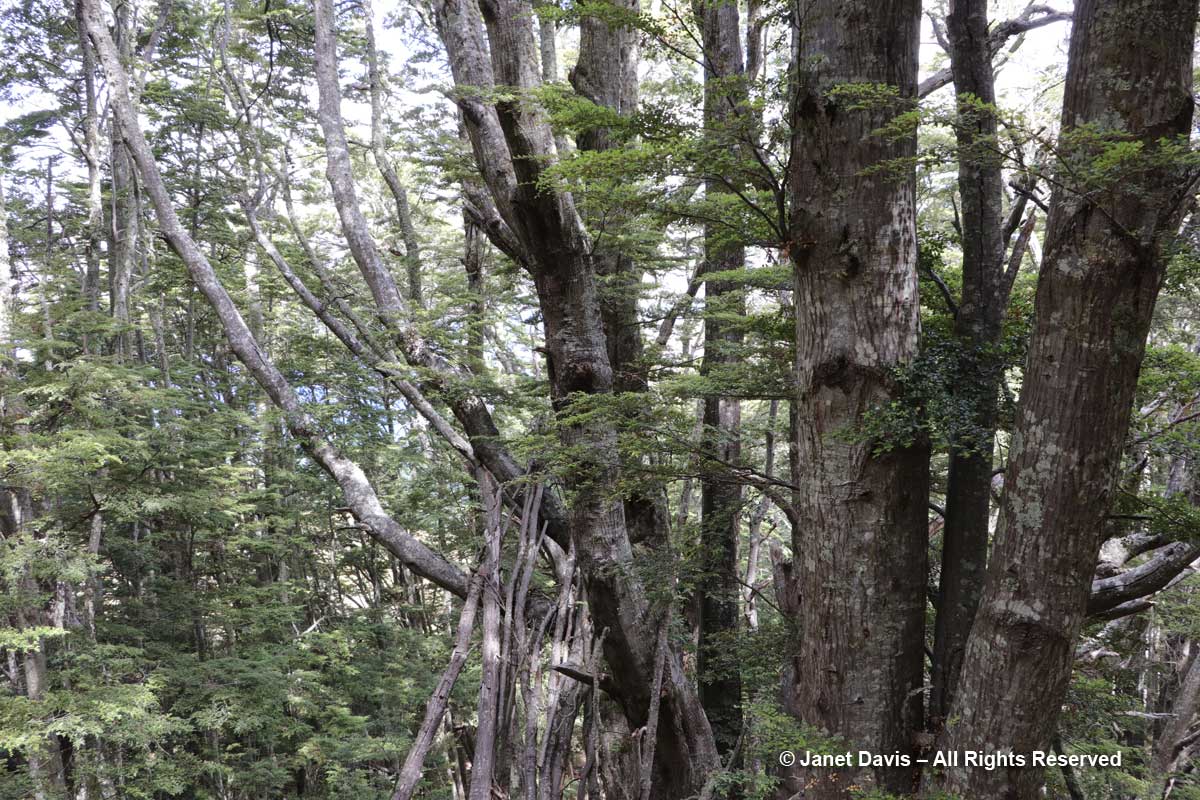As the crow (or Air New Zealand) flies, it’s approximately 1024 kilometres (636 miles) from Auckland on the North Island to Queenstown on the South Island, most of it over the Tasman Sea. That was our route on our 7th touring day with the American Horticultural Society’s Gardens, Wine & Wilderness Tour in January 2018.
Below on Google’s satellite view is the approximate route that AZ 615 takes inland from the Tasman Sea (which also separates Australia and New Zealand), bearing southeast over the Southern Alps towards Queenstown.
Gate to gate, the flight takes about 1 hour and 50 minutes (80 minutes or so of flying time) and the last 15 minutes of flying over the lake, through the valley in which Queenstown sits and up its Frankton Arm to the airport make it among the most beautiful air approaches on the planet. In fact in 2015 respondents named Queenstown as the “most scenic airport approach” in a survey of that category.
So….. given that we had perfect weather on the flight, that I had the almost perfect seat overlooking the left engine cowling, and that I was enjoying trying out my new Samsung S8 phone, indulge me for a few photos while we approach Queenstown together. (If you make it to the end, there’s a little….’surprise’.) The route took us over the Southern Alps, the South Island’s long backbone, which stretches for 500 kilometres from Fiordland in the southwest to Nelson Lake National Park in the northeast. Here we are looking north toward Mount Aspiring National Park. North of the park and not visible in the photo is mighty Mount Cook, New Zealand’s highest peak at 3724 metres (12,218 ft), where we would be in a few days.
Within seconds, below, the northernmost arm of the dogleg-shaped (Z-shaped) Lake Wakatipu was visible, with Pig Island a notable landmark. This beautiful finger lake is 80 kilometres (50 miles) long with a maximum depth of 380 metres (1280 feet). Though the mountains look barren here, that greenish-yellow in the scree and fellfields on the slopes features snow tussock meadows with myriad high alpine species.
In the photo below we are looking straight up Lake Wakatipu towards the town of Glenorchy at its head. The lake was carved out by glaciers more than 15,000 years ago, between mountains uplifted over millions of years by earthquakes along the Alpine Fault. (New Zealand is part of the seismically-active Ring of Fire in the Pacific Basin, as we know from recent devastating earthquakes in Christchurch and elsewhere). Here on the west side of the South Island, the mountains are made of greywacke, a sandstone-mudstone mix that rose tectonically with the mountains from sediment in a deep ocean trench on the boundary of the Gondwana supercontinent between 100-300 million years ago. (Before it broke off and floated away, New Zealand was on the edge of Gondwana, which also included South America, Africa, Australia, India, and Antarctic.) Because greywacke fractures and falls apart easily, mountain climbers in the Southern Alps nicknamed it ‘Weetbix’. On the east side of the South Island, the bedrock is mostly metamorphic schist. For a more comprehensive exploration of New Zealand geology, have a look at this excellent website.
Now we’re heading straight along the middle arm of the Z-shaped lake towards Queenstown.
A little fun fact about Lake Wakatipu. Its dogleg shape causes it to produce a tide-like phenomenon called a seiche, or standing wave, derived from a Swiss-French word that means “swaying back and forth”. The lake’s surface rises and falls roughly 10 cm (4 inches) on a 25-minute cycle, best observed apparently at Bob’s Cove (below) on the way into Queenstown. In Māori legend, the rhythmic surging was caused by the monster Matau dozing away at the bottom of the lake.
A few seconds later, we come to the fun part: Queenstown. Though it’s New Zealand’s winter sports centre with lots of mountain areas to ski,there is something for everyone in this alpine town 12 months a year. Here I’ve labelled a few of the things we did over the next few days. Yes, we visited the Queenstown Garden and then travelled up the gondola in order to botanize on the flank of Ben Lomond from which we saw those ‘ghost pines’ in the far left!
And this, a second or so later….Yes, my husband Doug played golf at the Queenstown Golf Course, below (thank goodness for extra-curricular activities for non-gardening spouses!) Now we’re flying down the Frankton Arm of Lake Wakatipu towards the airport suburb of, yes, Frankton.
You must be thinking we’re going to land any moment now, right? Well, that’s what we thought as we roared towards the runway………
…. but NO! Captain didn’t like those tricky Queenstown winds. So up we went for a fly-around. Of course, no one would rather ‘take a chance’ on a landing, so thank you Captain AZ615 for keeping things safe. Now we see the Lower Shotover River behind the airport as we ascend again. Fun!
I’m not quite sure where we went…. Remarkables? (There are so many mountains around Queenstown). Anyway, we rounded a craggy, brown peak……
….. and flew over Lake Hayes, below. (At this point, I should give a nod to Google Earth, which helped me identify many of the Queenstown area landmarks.)
Finally, with that first small adventure under our belt, we landed at the airport in Queenstown – adventure capital of New Zealand!
Wine-Tasting Adventure!
Alan, our lovely bus driver from the North Island was at the airport to meet us and off we drove along the Kawauru River towards Cromwell. This narrow gorge of the river is called Roaring Meg; it contains a dam and two small power stations that form the Roaring Meg Power Scheme, built in 1934. Hydro-electric power provides almost 60% of New Zealand’s electricity.
I couldn’t resist this bus window view of the local greywacke rock with its “Weetbix” composition.
Before long we arrived at Goldfields where we were scheduled to have a wine tasting and lunch. But the place is more than that; it offers tourists a chance to pan for gold like the prospectors who arrived by the thousands in the 1860s for the Central Otago Gold Rush.
Or you could pay to sit in a jet boat and roar up the Kawauru Gorge. (No thanks…)
Instead we elected to head to our reserved table at Wild Earth Wines…….
…. to enjoy a wine tasting……
….. and have a lunch that reminded us all that New Zealand is home to vibrant sheep and cattle farming industries as well as a rich fishery!
After lunch, we had a date with one of New Zealand’s iconic adventure tourism spots. Along the route, we passed a small vineyard and learned that this is the most southerly of New Zealand’s wine-growing regions.
NOT Bungy-Jumping Adventure!
Soon we arrived at the Kawarau Bridge Bungy Centre, which is the original site for New Zealand bungy-jumping. It was here in 1989 that Kiwi pals A.J. Hackett and Henry Van Asch first launched their plans for a commercial bungy-jumping enterprise mimicking the “land jumpers” of Vanautu. Check out this video at 2:35 of their big p.r. stunt in Paris, bungy-jumping from the Eiffel Tower, followed by a quick arrest. One of the serious medical risks of doing this is retinal detachment – and since I suffered one of those without even jumping off my kitchen table a few decades back, I restricted myself to photographing the lovely young woman below, who would have paid $205 ($175 NZ student) for the privilege of doing this……
…… and videotaping a man doing a water dunk as he enjoyed his bungy-jump, with a little valley wind in the background. (My 4- and 2-year old grandkids LOVE this video.!)
We watched as river rafts waited for the jumpers to clear the platform. A few in our group chose to do some rafting the next day – but we were planning to look for plants!
Janet Blair Garden
Then we made our way towards Queenstown via the lovely garden of Janet Blair.
Our American Horticultural Society guide Richard Lyon of Garden Adventures, Ltd. enjoyed his chat with our hostess, Janet. Richard, a Pennsylvania-based landscape architect has friendships with a long roster of creative gardeners who generously open their gardens to him on his annual winter tours to his home country.
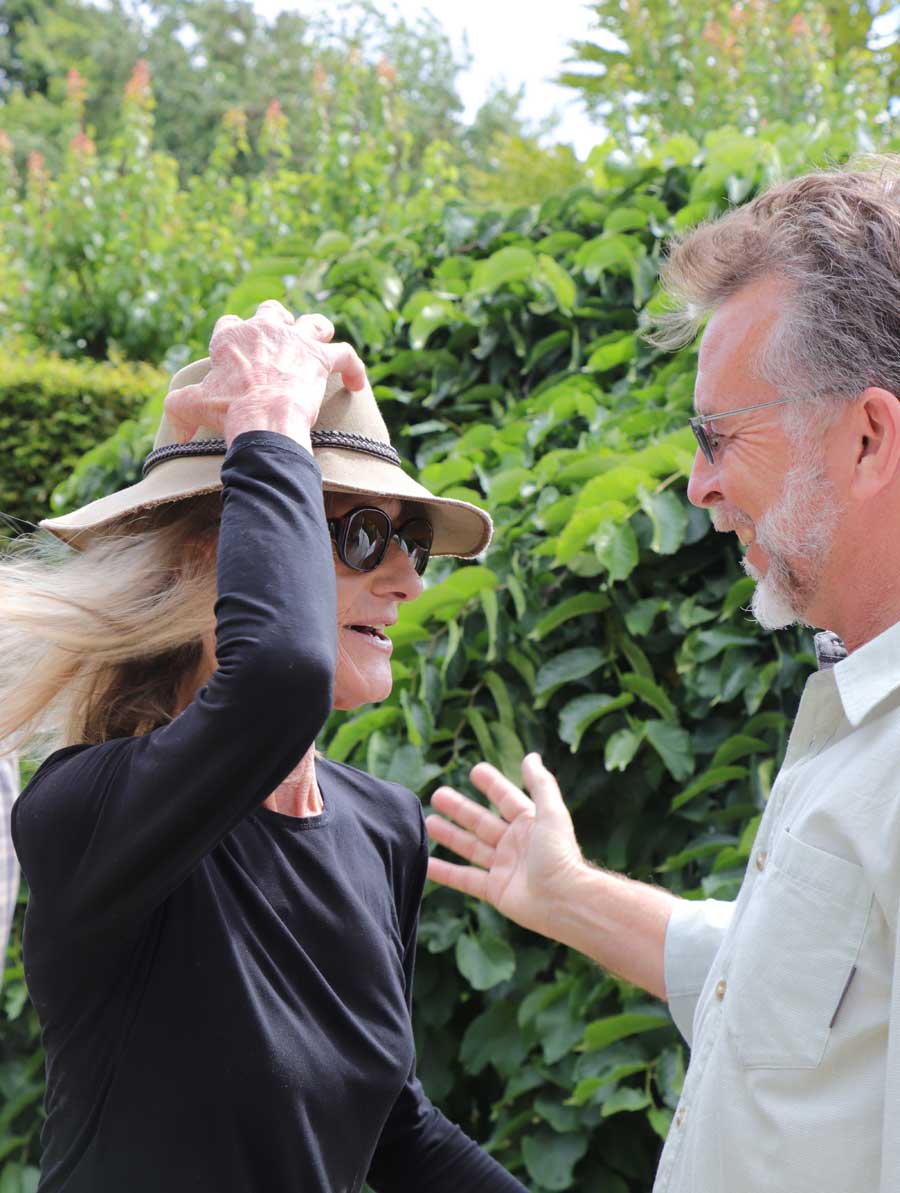
Look at this heart-shaped hedge window…..
….. and this beautiful arch into a garden room.
New Zealand experienced record heat in our first week of touring, echoing the dry summer they had before our arrival. This shady dell offered welcome relief.
Pretty combinations abounded in Janet’s garden, like this lavatera with lavender that…..
….. mirrors the hues of the Remarkables mountain range in the background, below. It was now time to head to our hotel in Queenstown for the night.
Queenstown Public Garden Advenure!
A free day in Queenstown! Along with a few plant geeks in the group, I visited the Queenstown Garden where our AHS host Panayoti Kelaidis, outreach director at Denver Botanic Gardens…..
…..toured us through the collections, which came from all over the world.
Apart from native New Zealand plants like lacebark ( Hoheria populnea)……
….. and wire netting bush (Corokia cotoneaster)….
……. I found some beautiful Romneya coulteri from California being visited by honey bees…..
….. and giant California redwoods (Sequoiadendron giganteum) with massive trunks….
…..and towering Douglas firs (Pseudotsuga menziesii). Seeing them here, clearly thriving after many decades, it would be shocking later that day to see the way they’ve invaded the mountains and valleys surrounding Queenstown – including those in the background of the photo – where the flanks are dark green with these Pacific Northwest natives.
Botanizing on Ben Lomond Adventure!
Soon after lunch, a few of us convened at the hotel and shared a cab to the Skyline Gondola Station at the base of Ben Lomond or Te-taumata-oHakitekura. It was a popular place with mountain-bikers and everyday folks like us.
Going up, the view of Queenstown Bay and Lake Wakatipu was spectacular. You can see right here the ‘wilding pines’ – a generic name for many non-native trees like these Douglas firs that were planted by European colonists in the late 1800s as a beautification project. Subsequent plantings took place as Arbor Day activities.
After getting off at the top where the view is even more stunning…..
….. we began our ‘tramp’ (as the Kiwis call a hike) by walking up through a dark Douglas fir forest. Notice that there are no understory plants here. Nada.
Soon we were on a path curving gently up through the Ben Lomond Scenic Reserve. We would be stopping well short of the upper saddle and summit (1748 m – 5735 ft), but it was still a good walk. And the botanizing was great!
I saw my very first mountain beech (Fuscospora cliffortioides).
The view over the subalpine shrubland was stunning…..
…..if you discounted the sprayed ghost forest of Douglas firs across the valley and the young trees popping up in the tussock grasses.
They are taking ‘control’ of these invasive conifers very seriously, as evidence by the sign here. And coming down on the path as we were ascending was one of the wilding eradication volunteers, clippers stuffed in his backpack.
But the plants! We saw turf mat daisy (Raoulia subsericea)…
….. and turpentine bush (Dracophyllum uniflorum), so called because of its eagerness to burn…..
….. and mountain cottonwood (Ozothamnus vauvilliersii)…..
….. and a very cool lycopod, Lycopodium fastigiatum.
That’s snow totara (Podocarpus nivalis) with the red berries, below. Not sure about the prostrate plant.
Panayoti had his reference book of New Zealand alpines with him, but he is a natural font of botanical knowledge and pointed out the tiniest plants to us as we trekked up the path. On the way we were passed by lots of young hikers heading up to the summit or coming down. From here, it was another 1-1/2 hours to the top. Ah to be young again, with fresh knees……
We had decided that the beech forest would be our turnaround point, and we finally got there. What a day it had been. Sitting in the shade under the beech trees…..
…… we realized we were tired, hot and thirsty. Time to start the hike down the mountain and back to the hotel — with a timely stop at a Queenstown pub en route. No gin-and-tonic ever tasted quite as delicious as the one I polished off with my fellow ‘trampers’.

